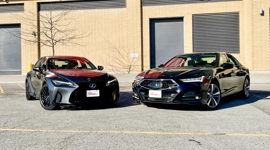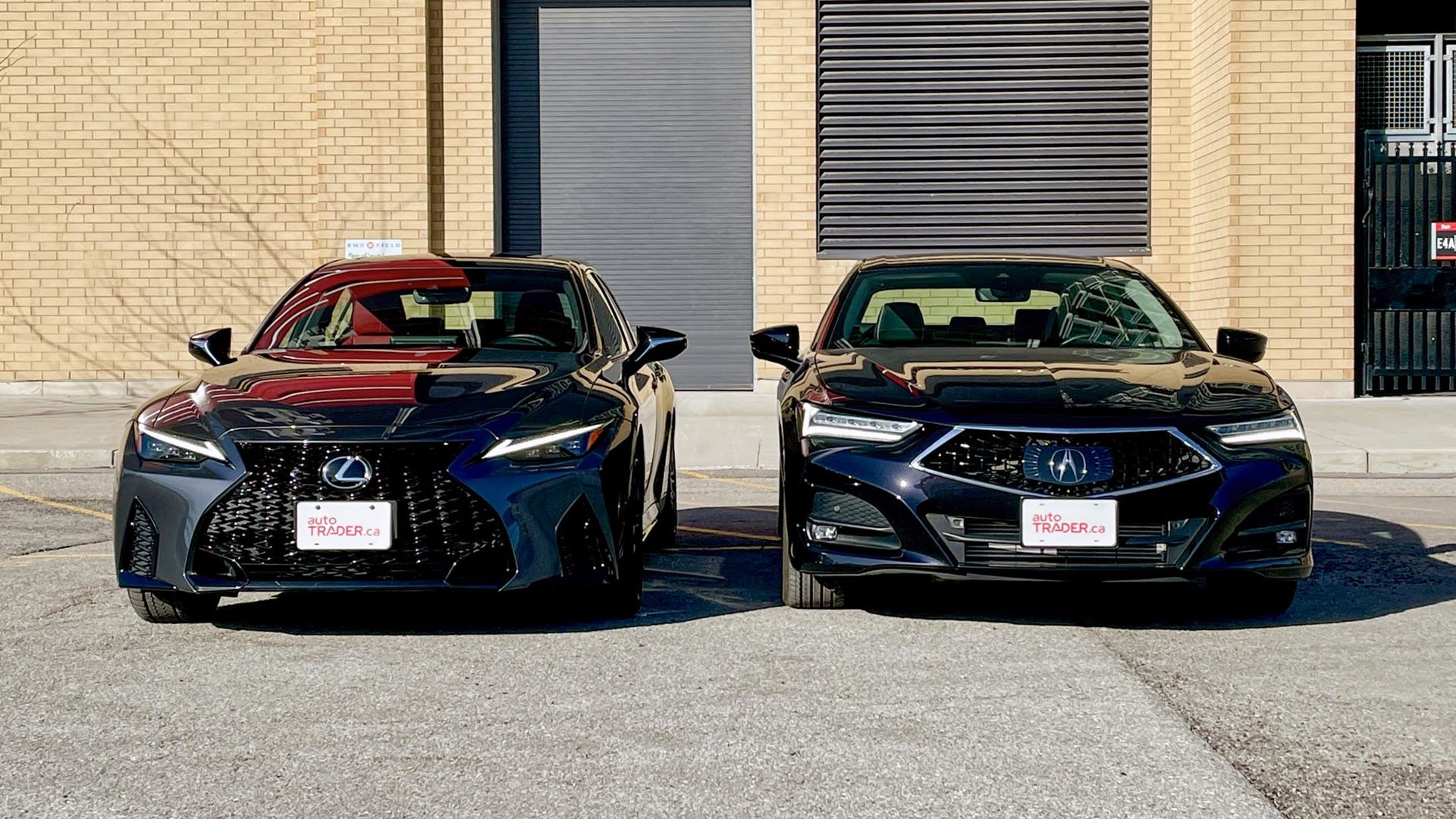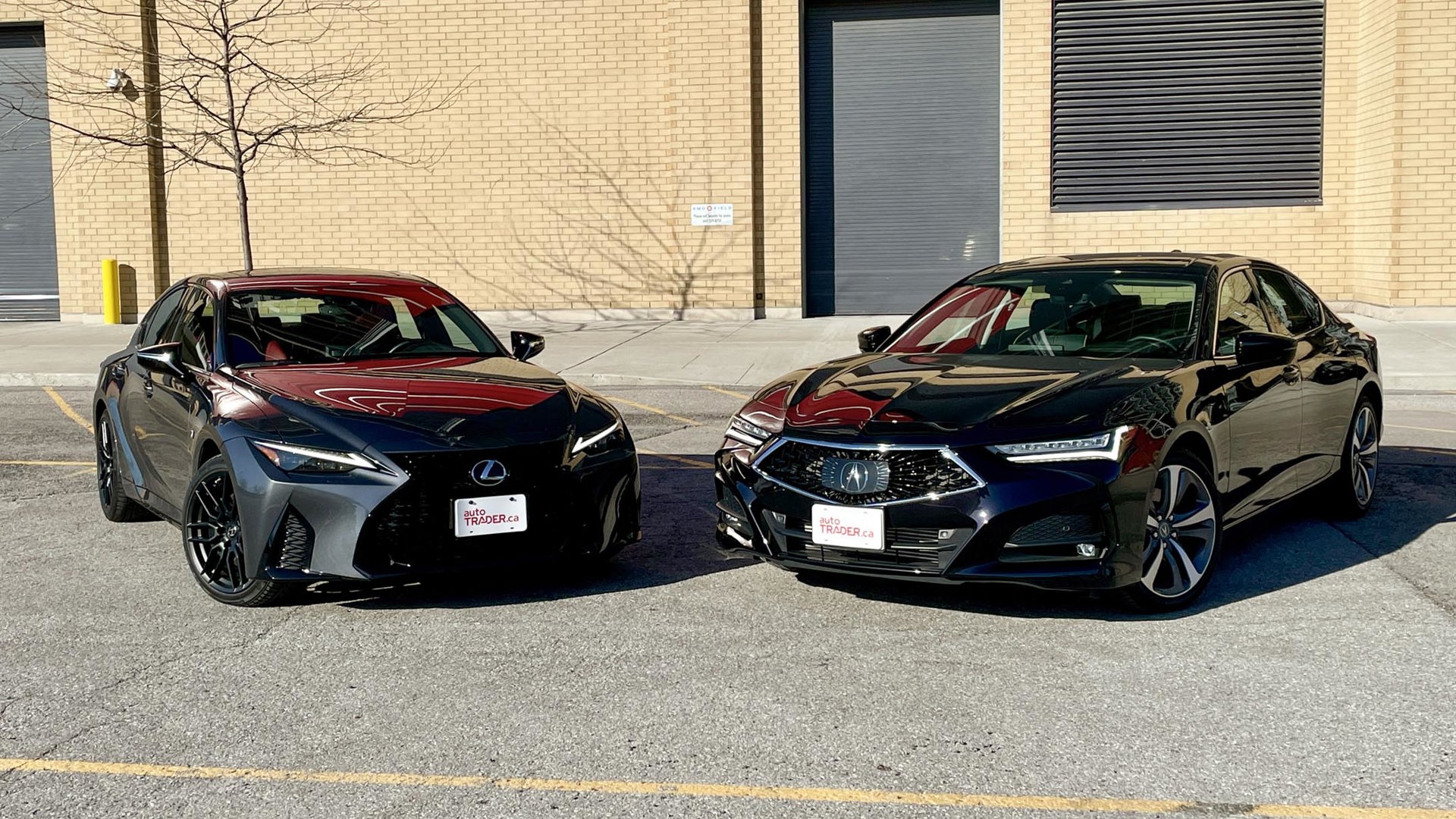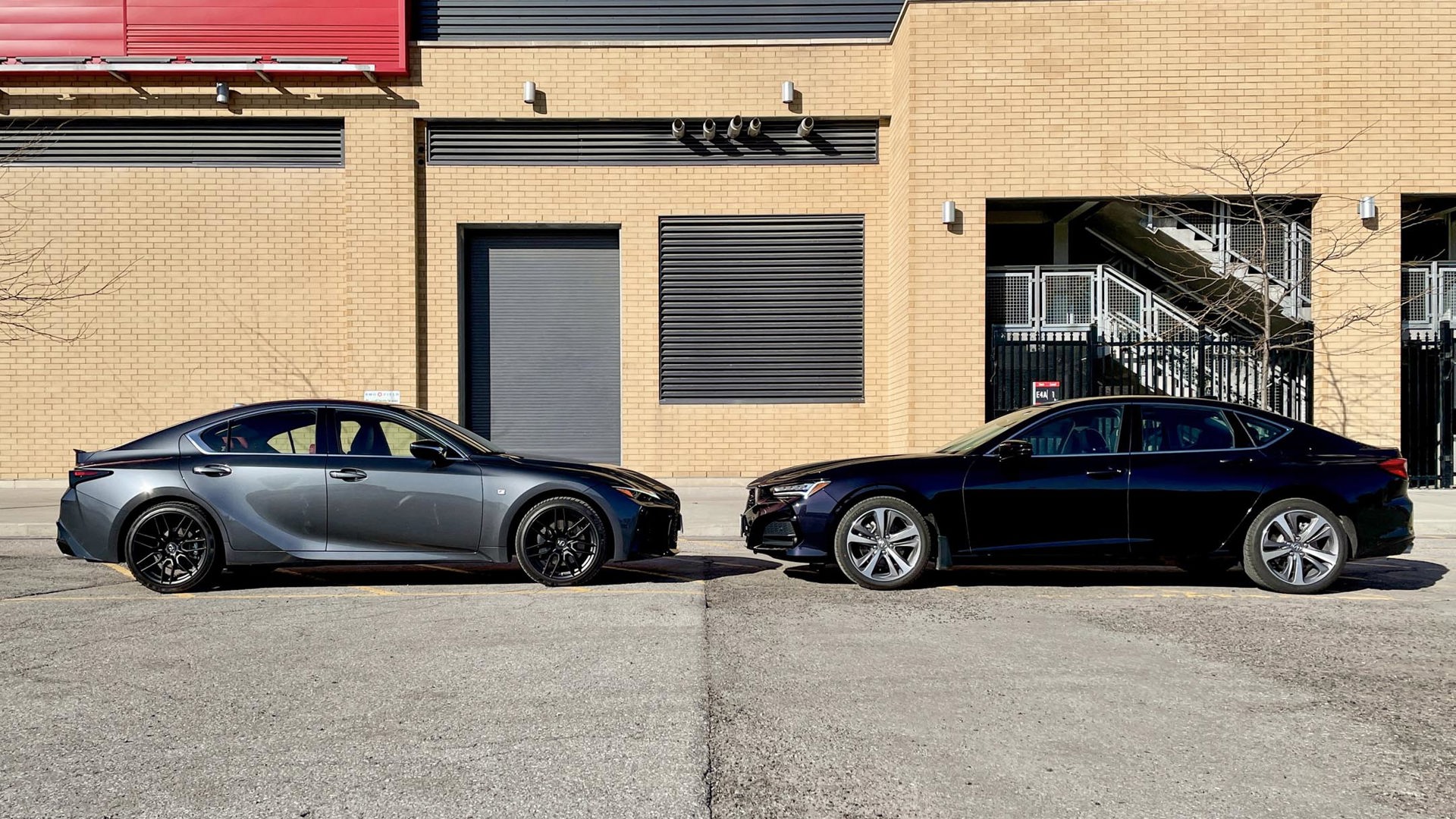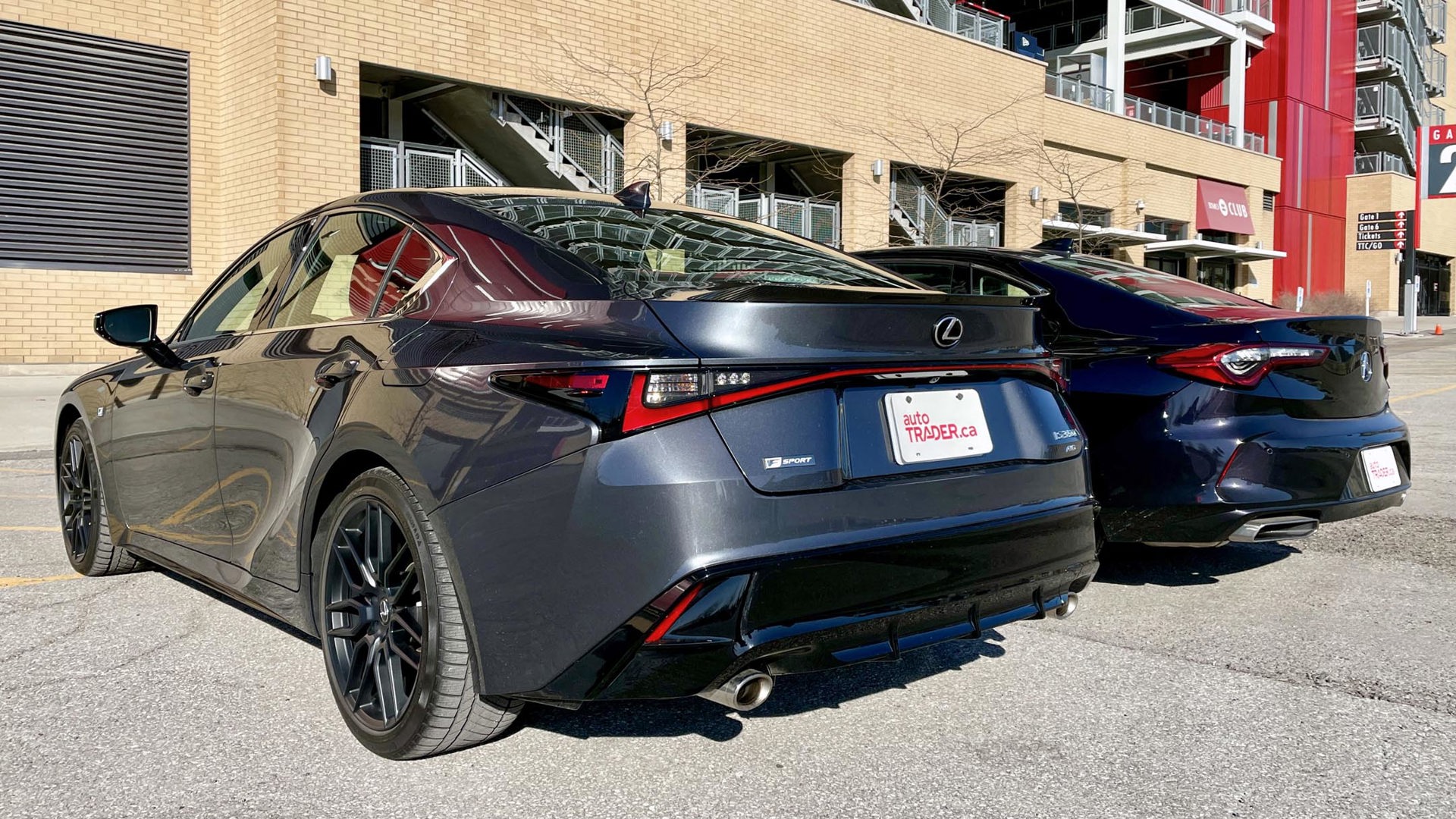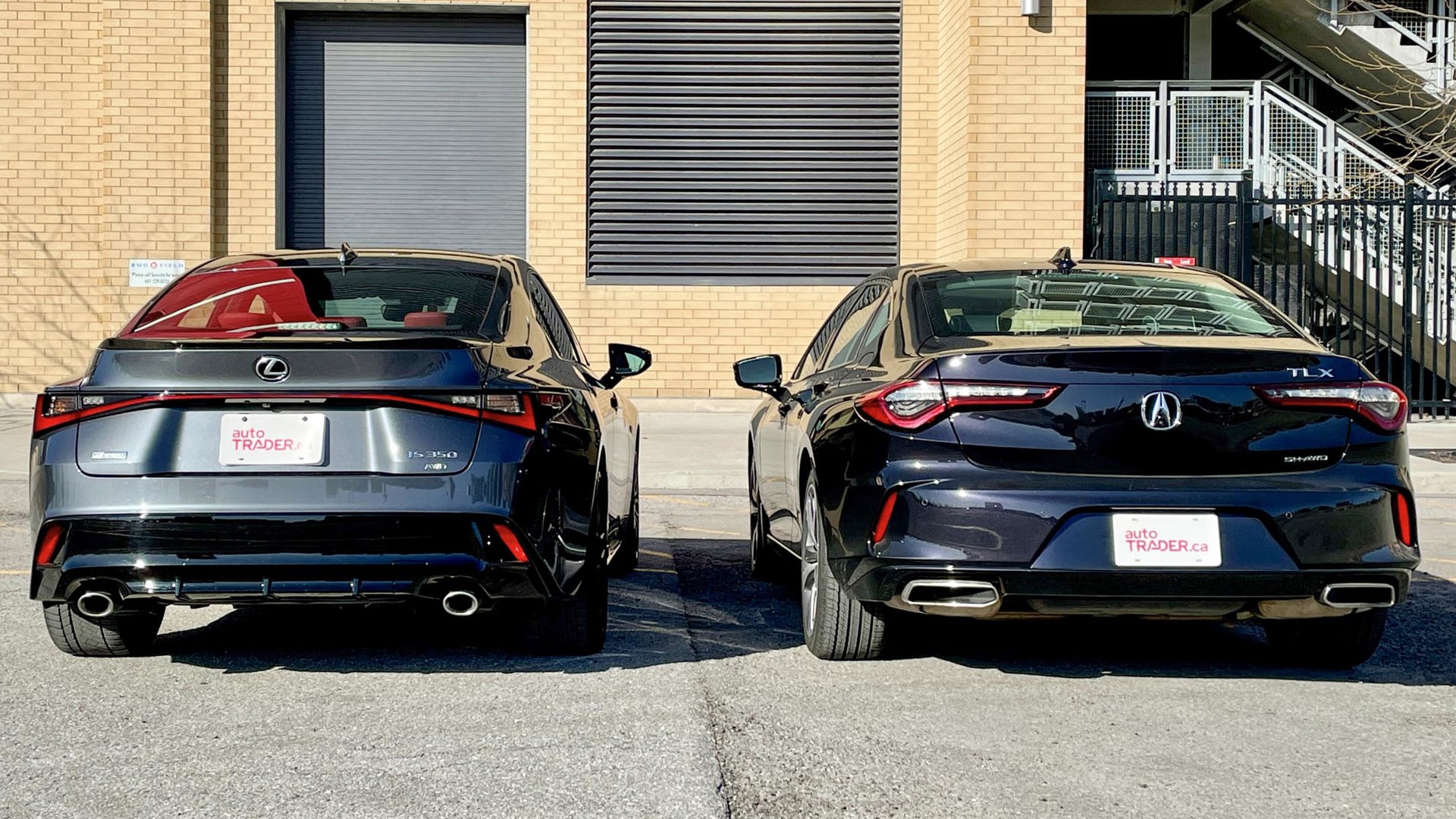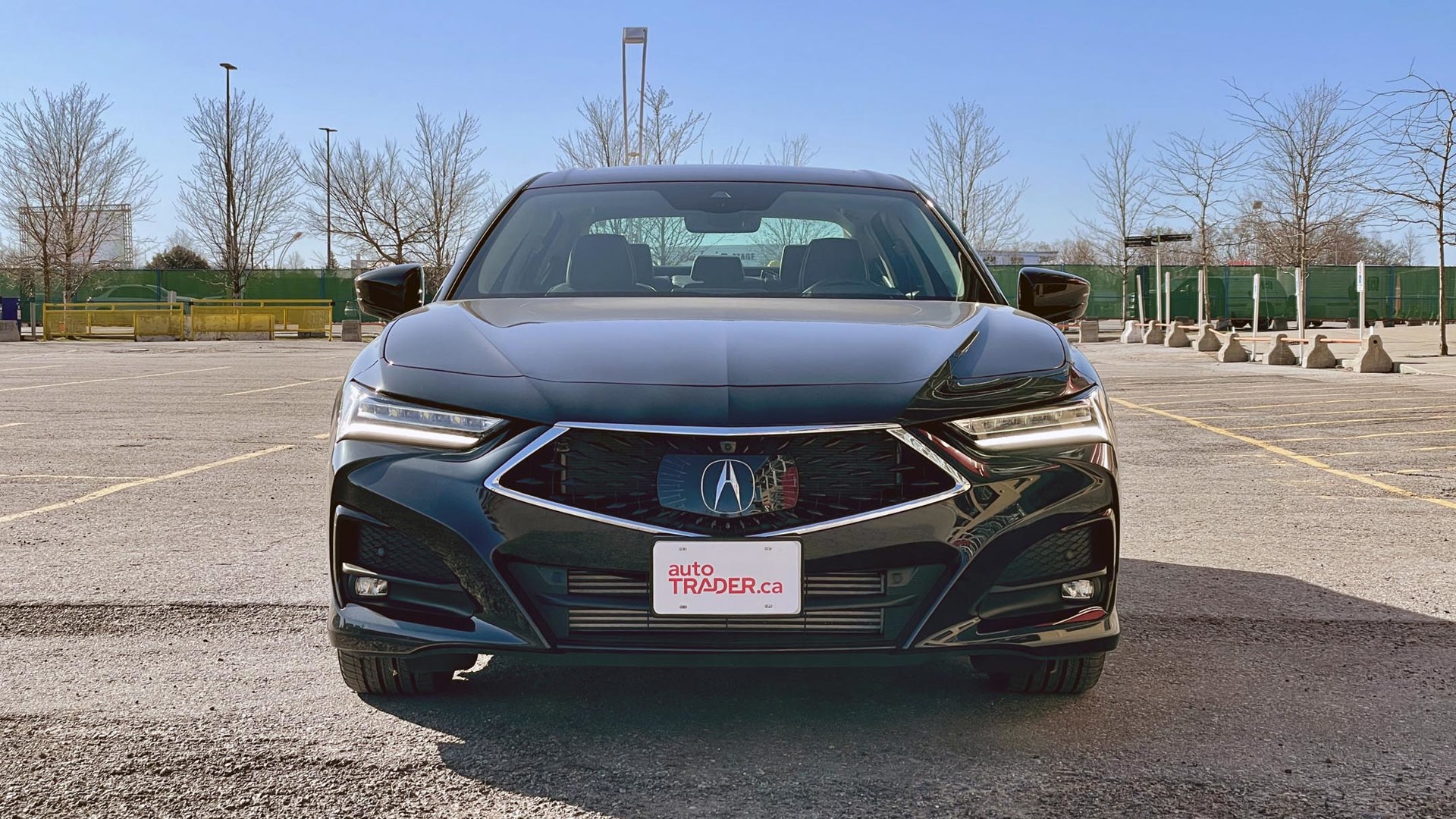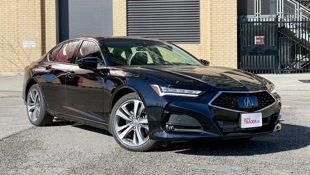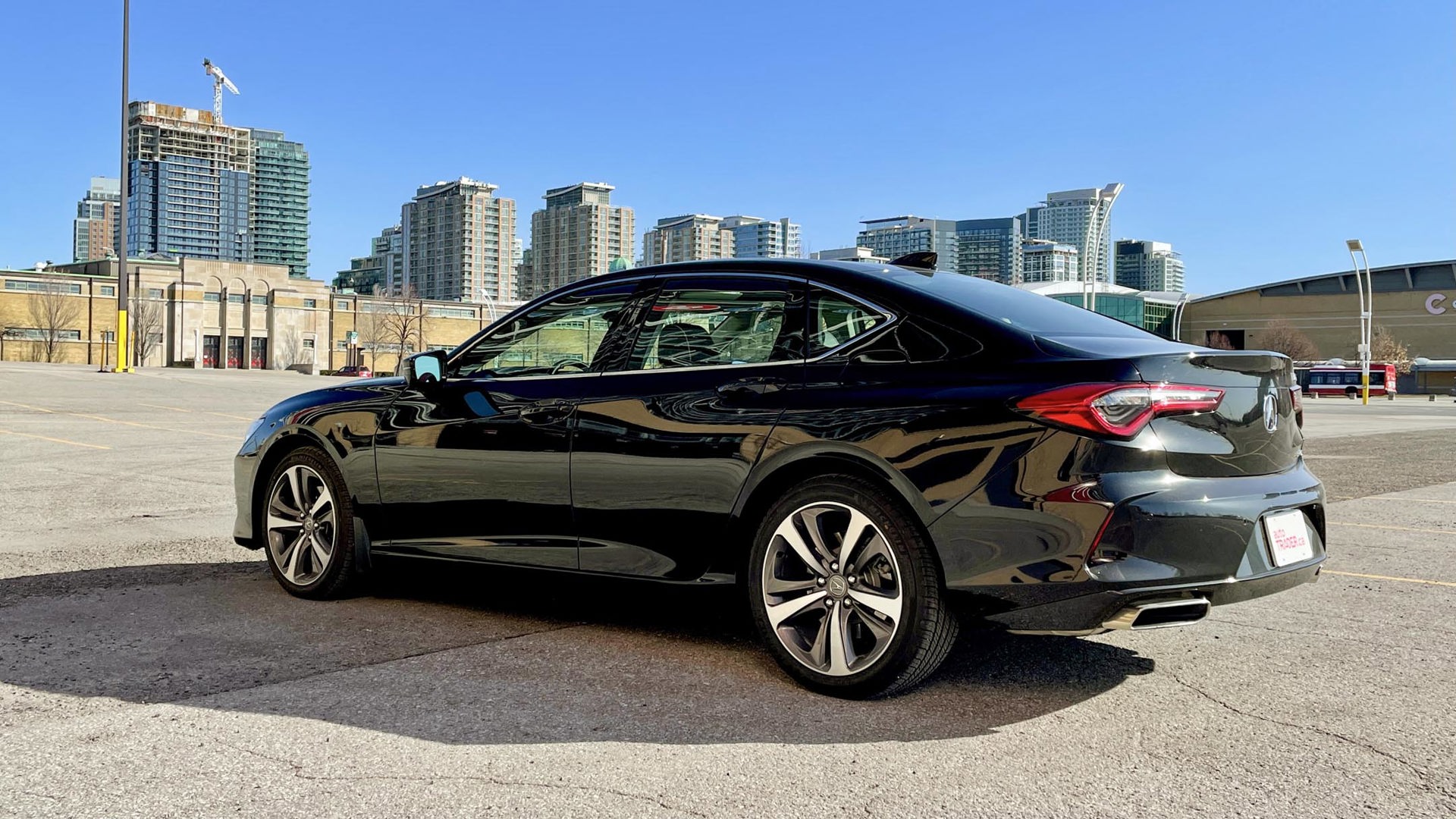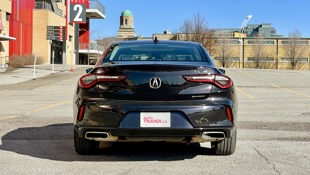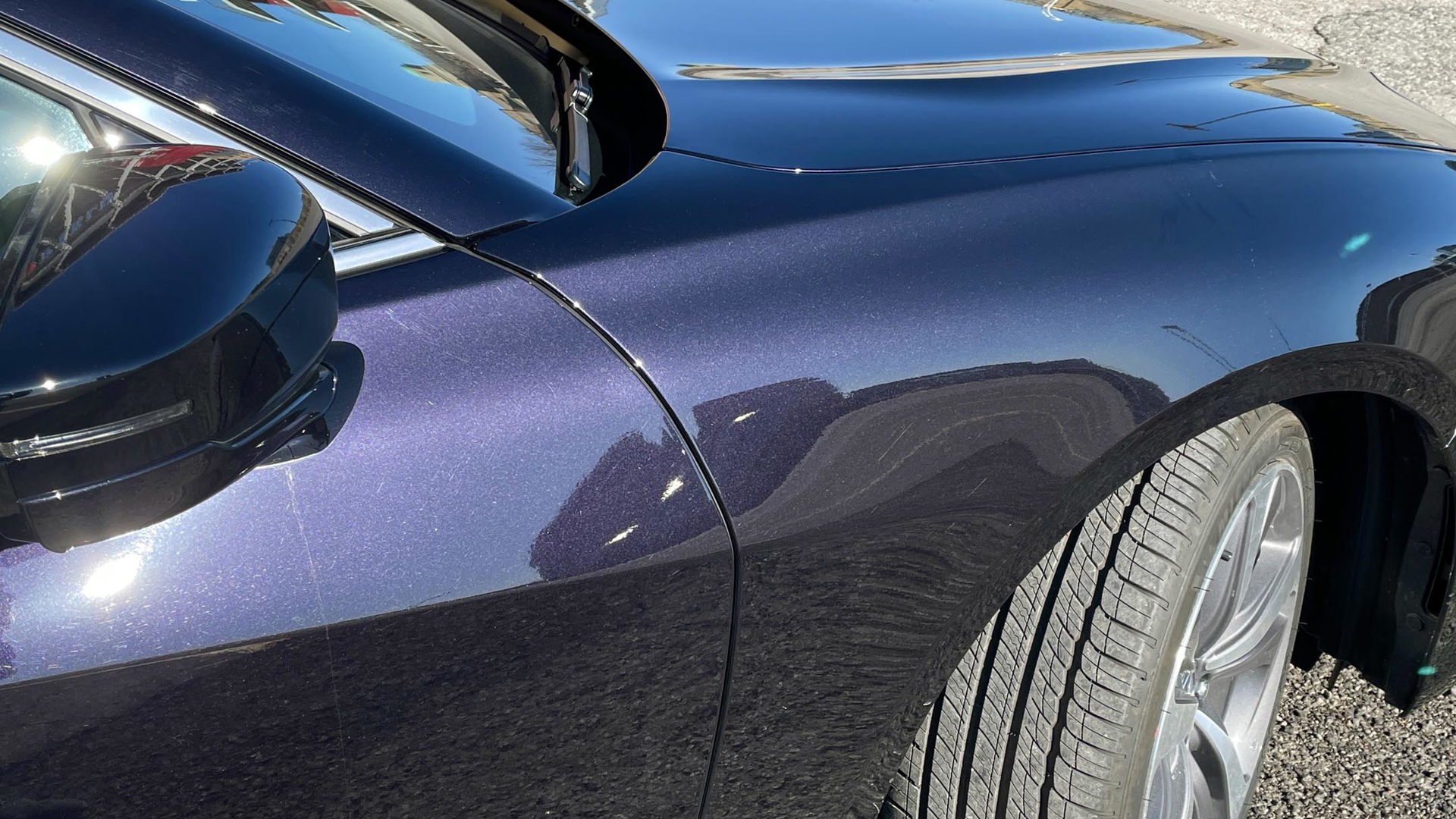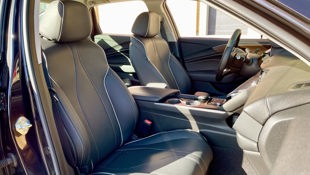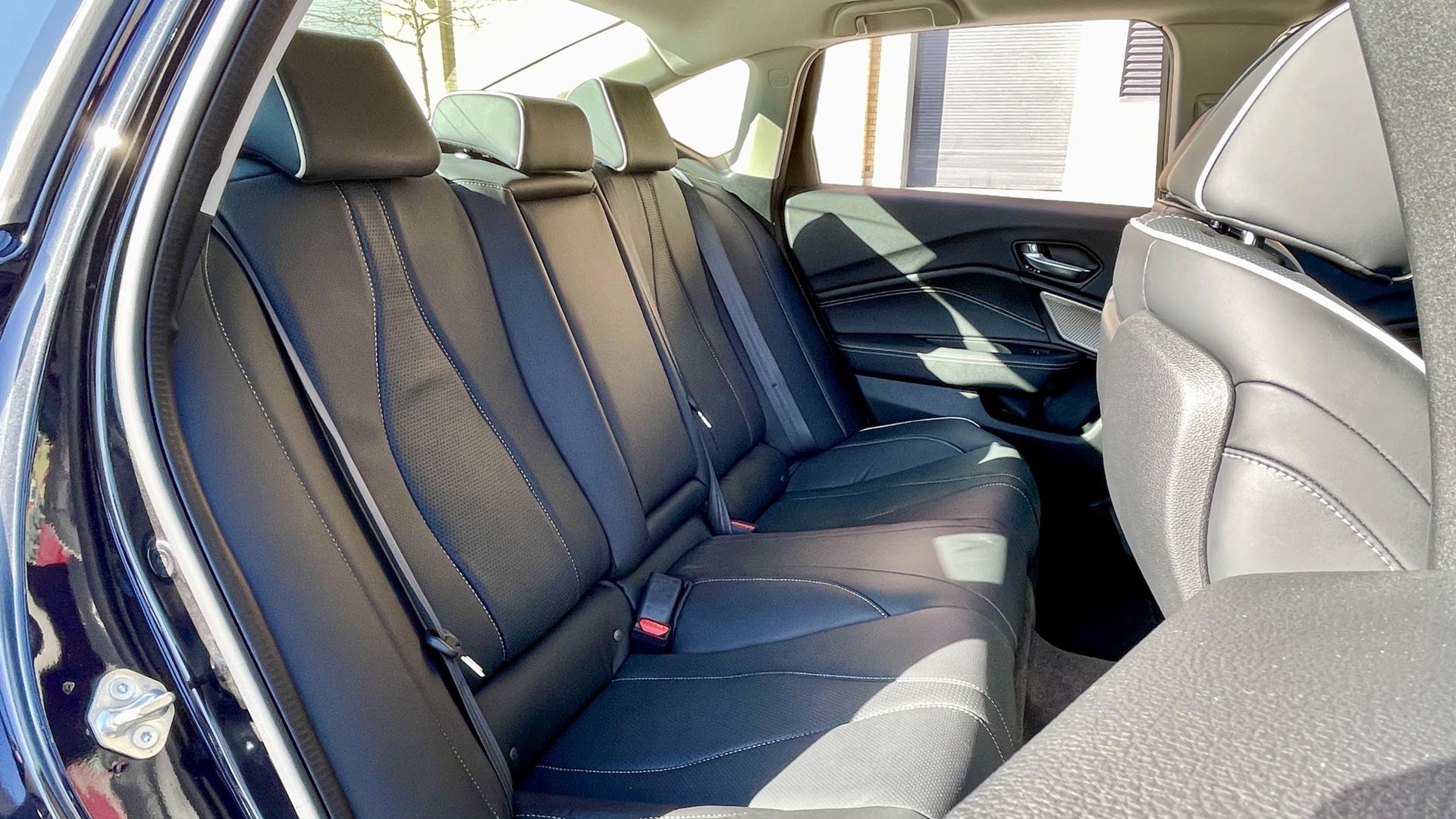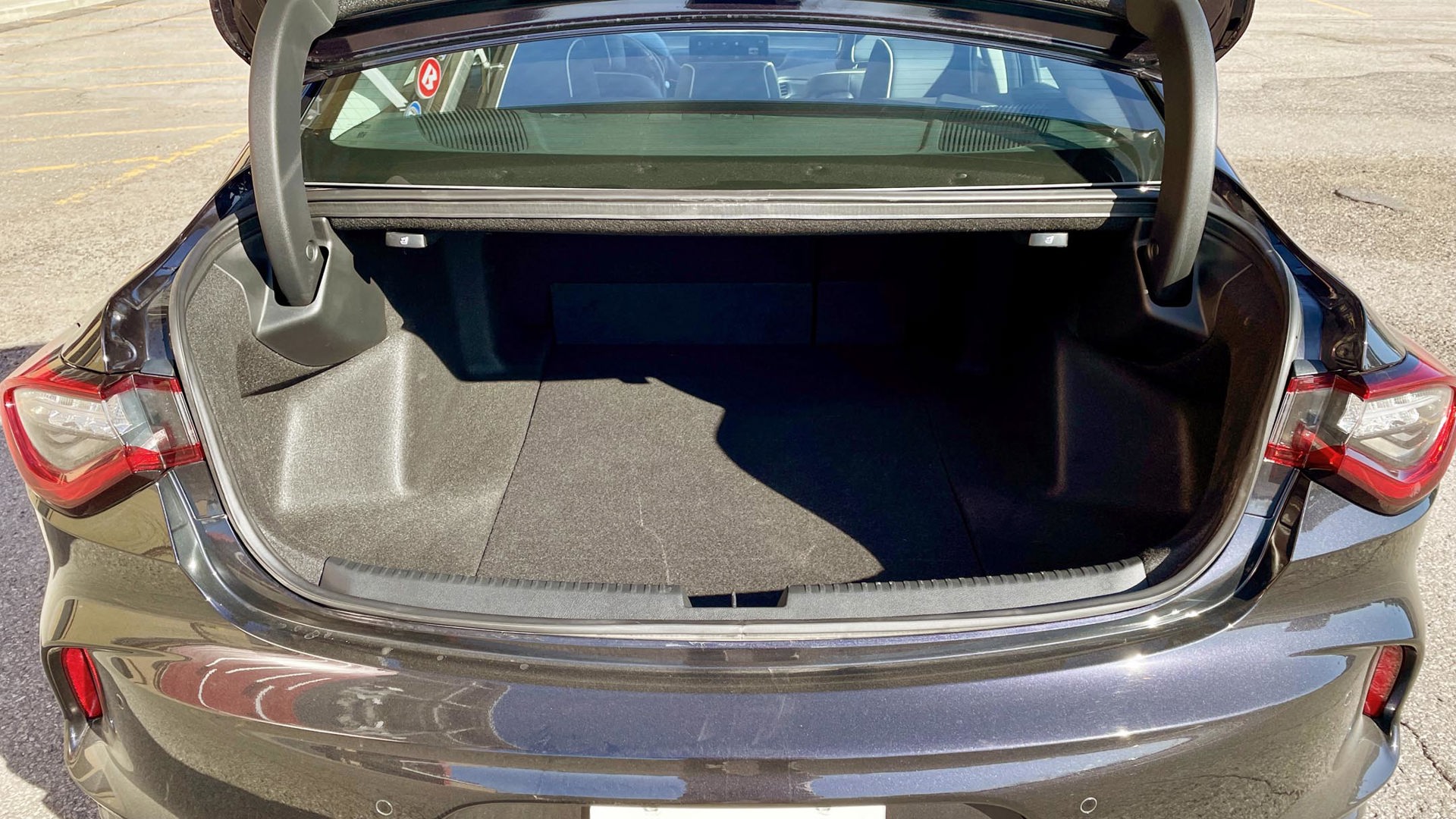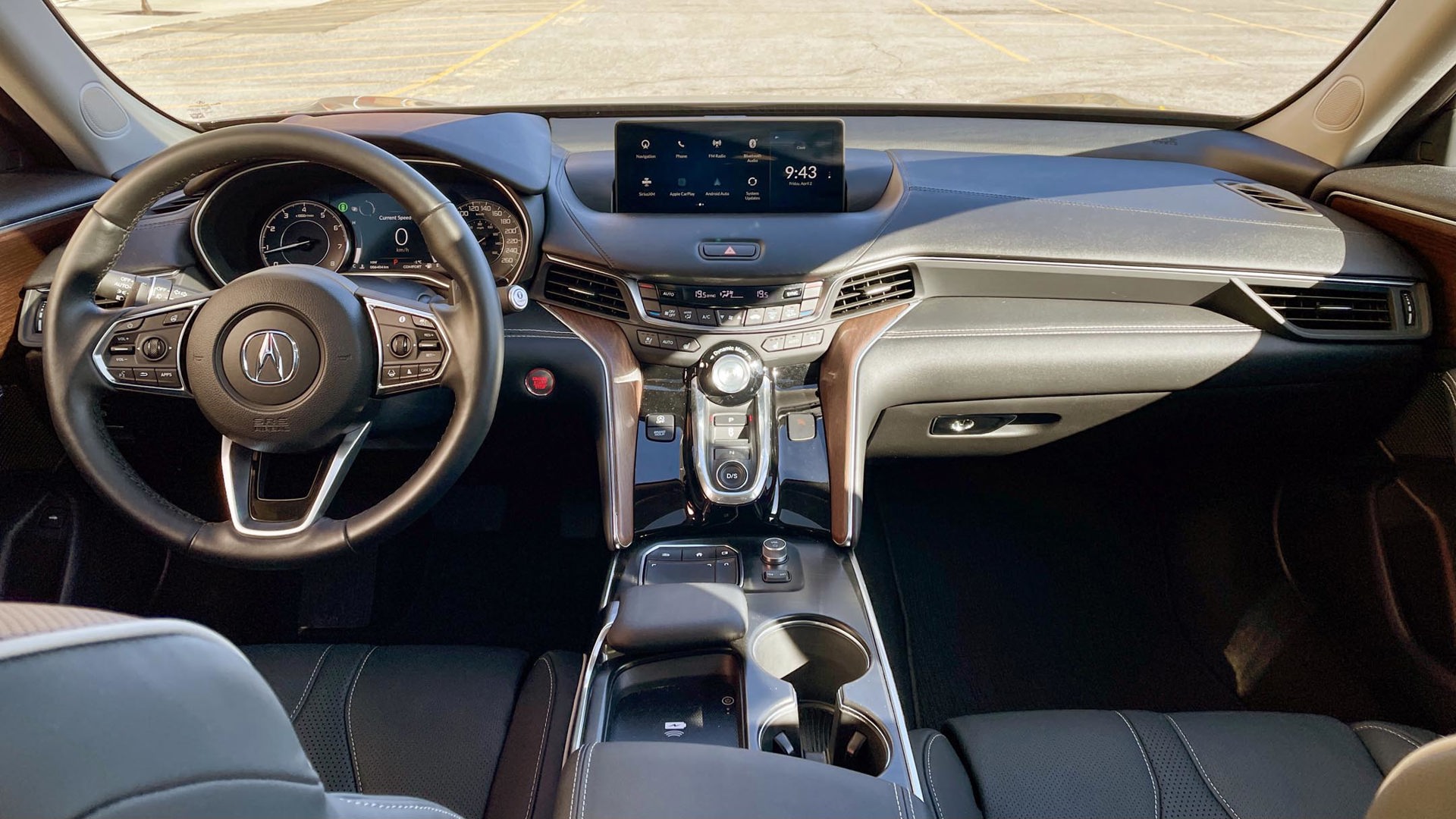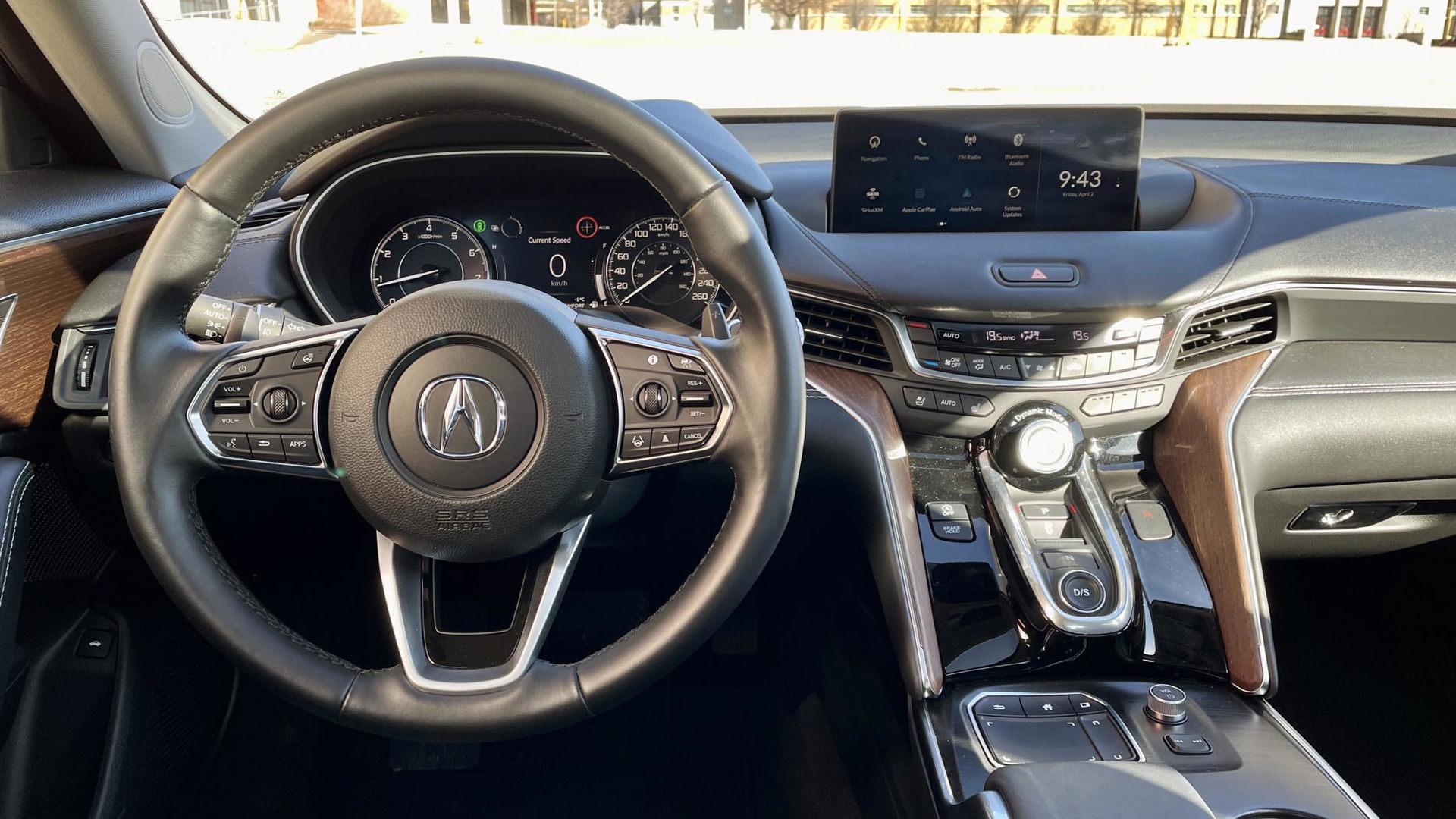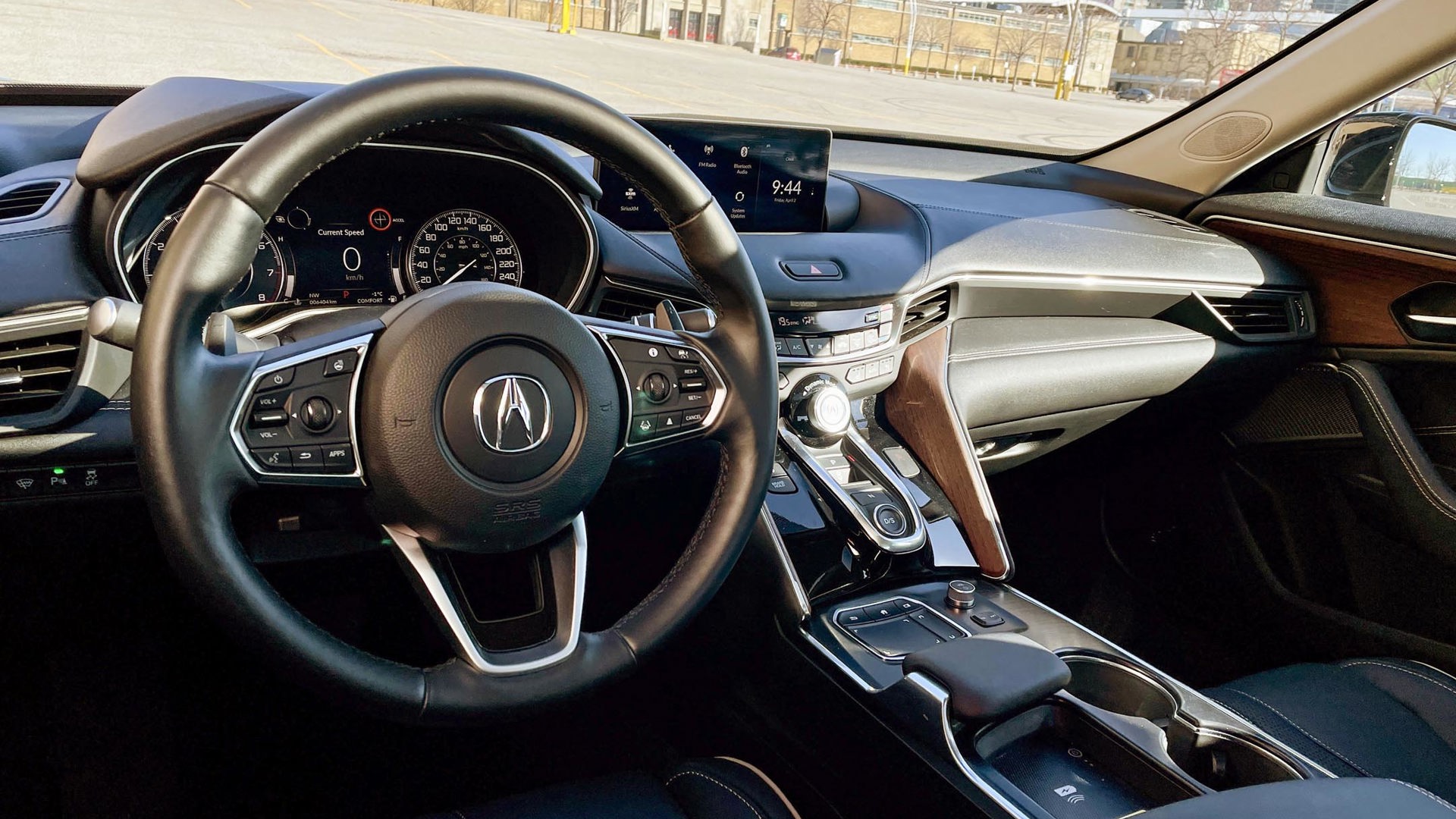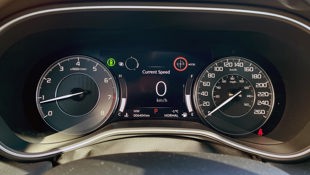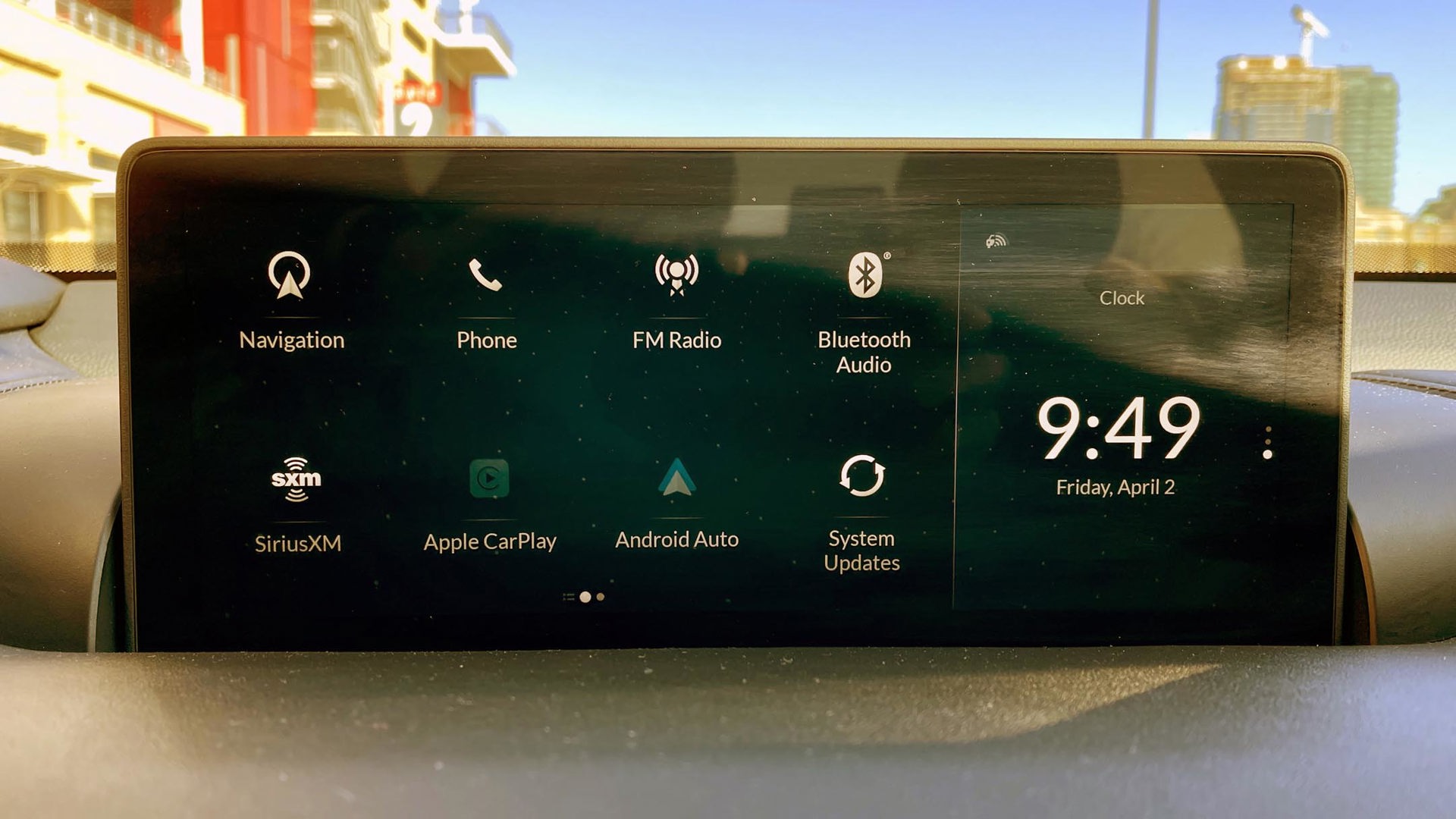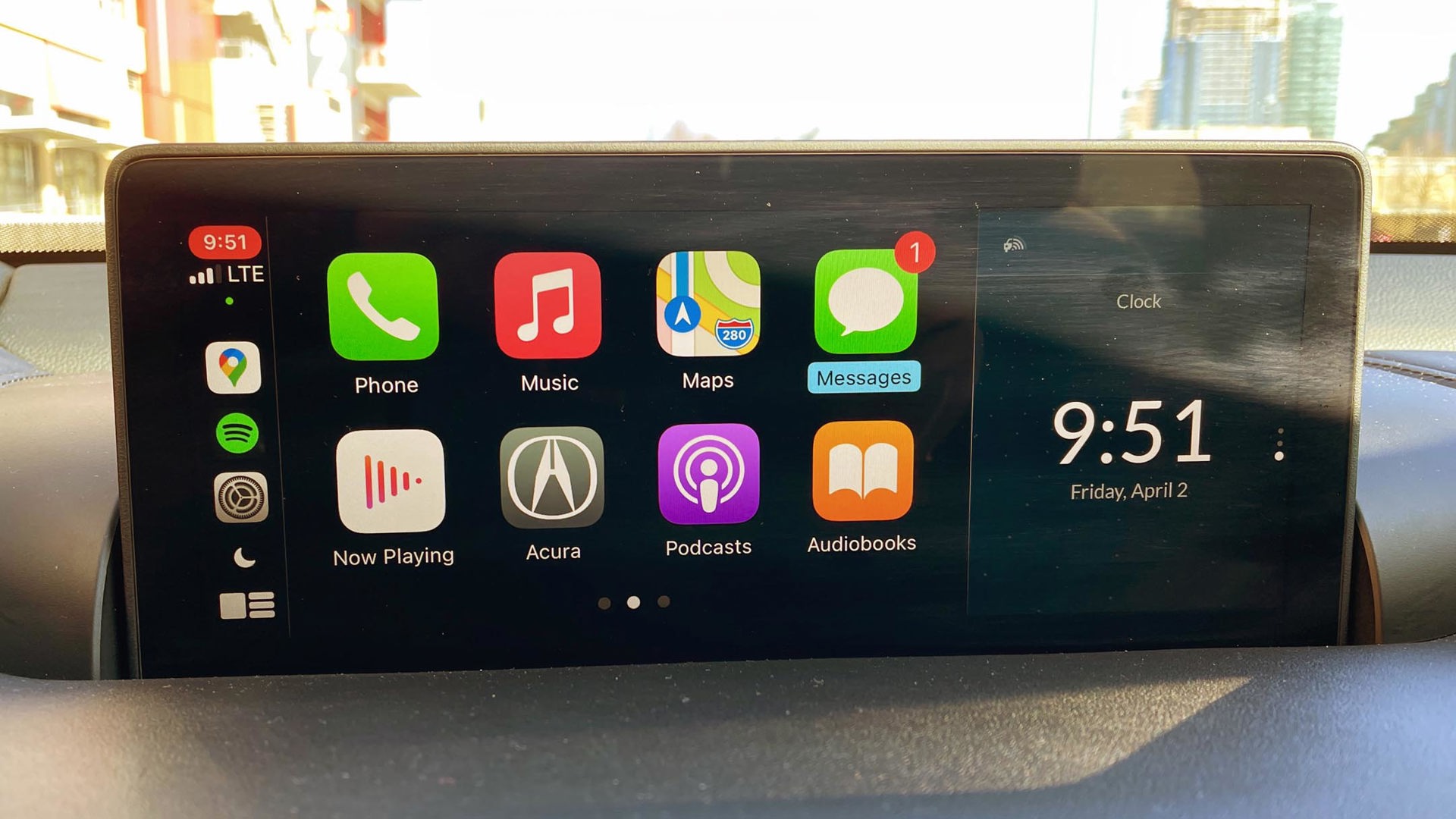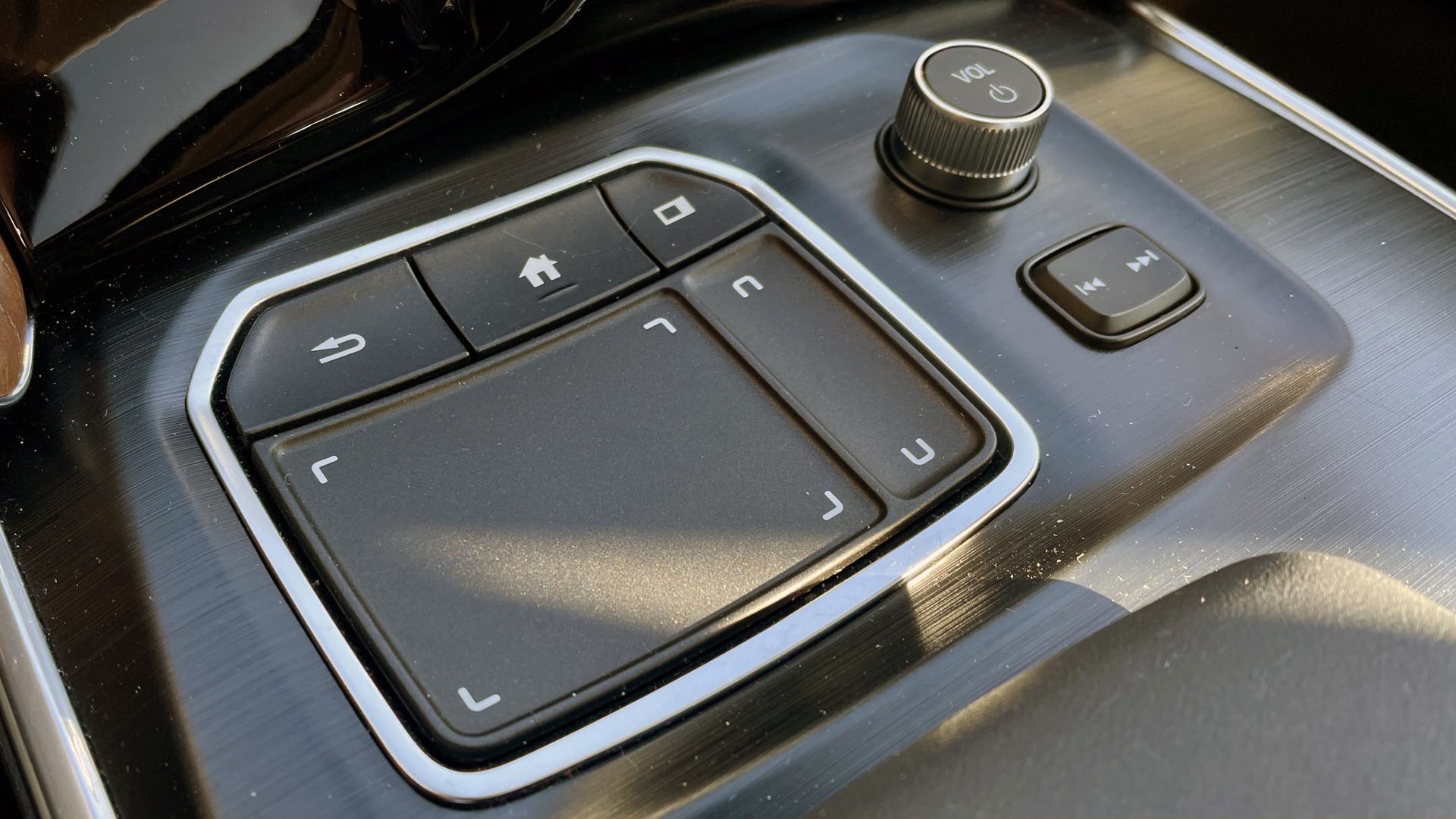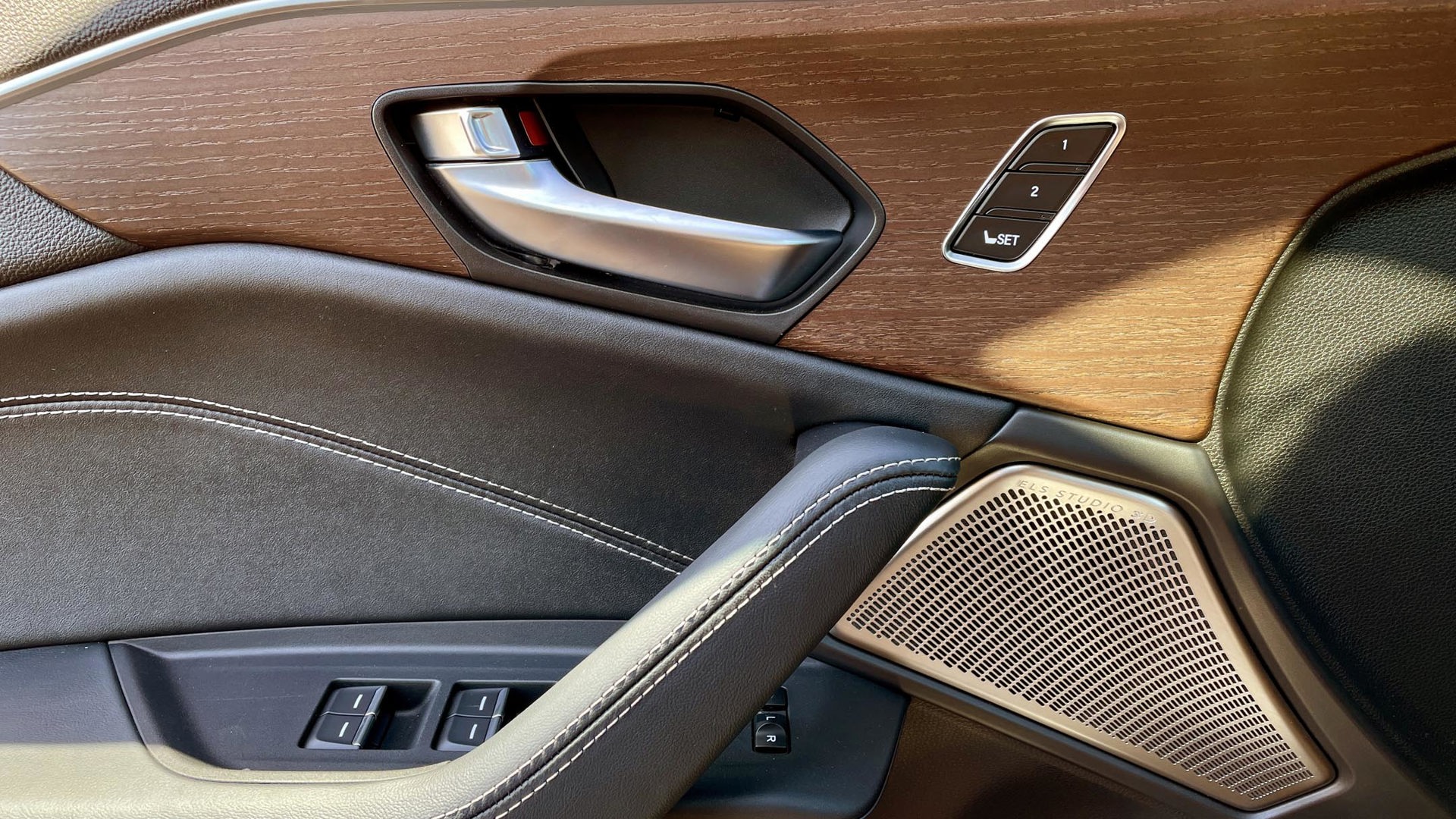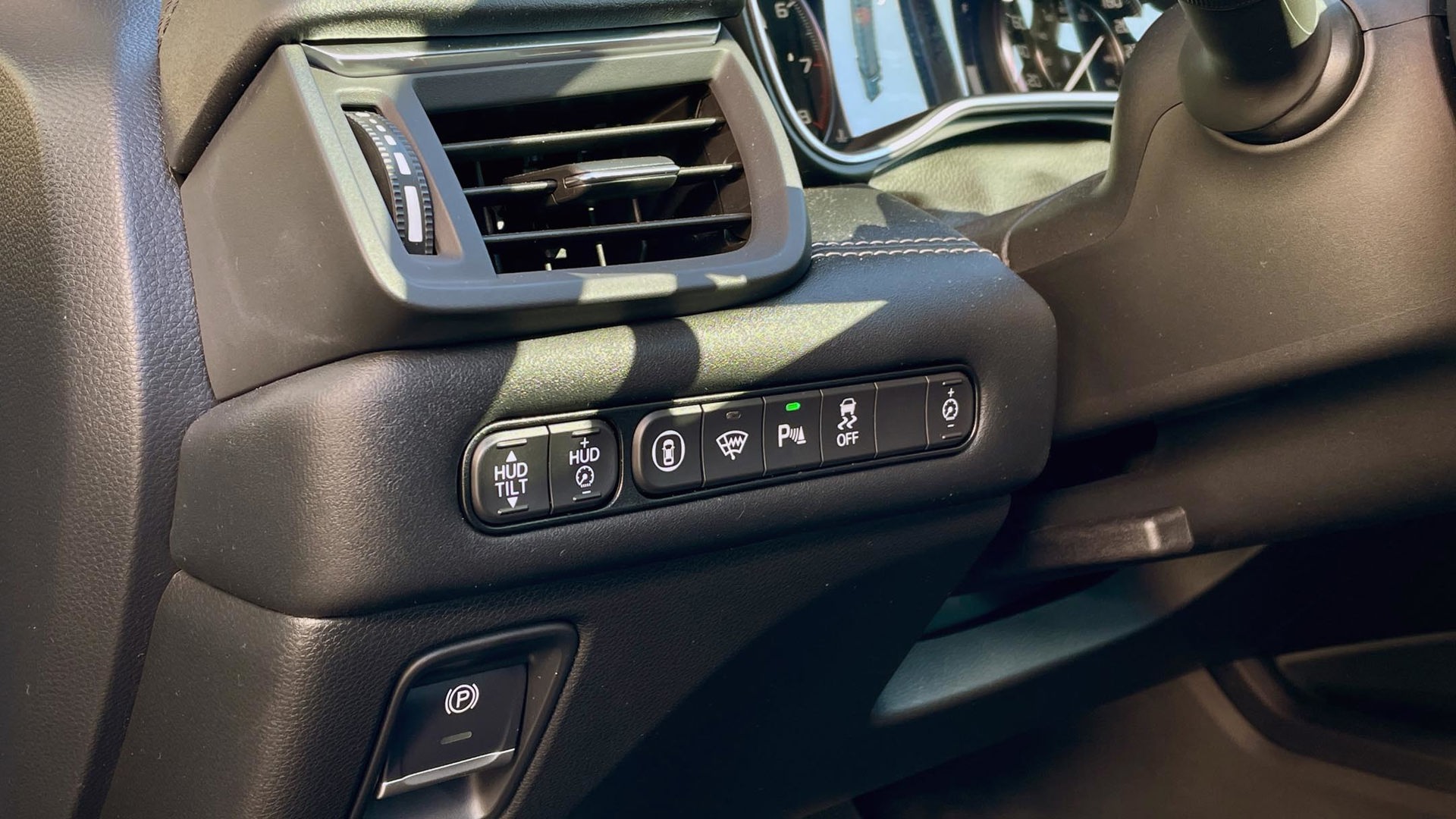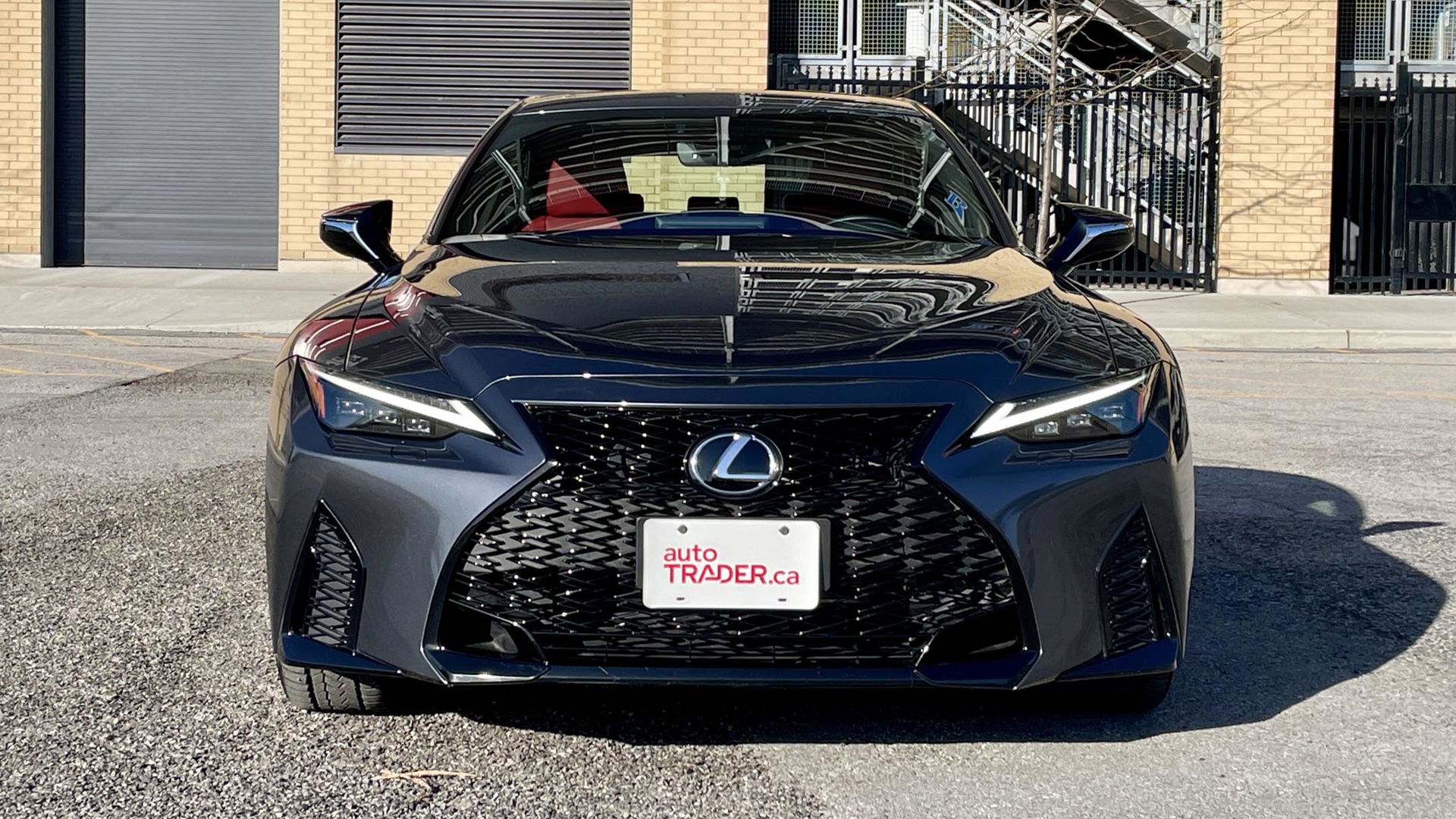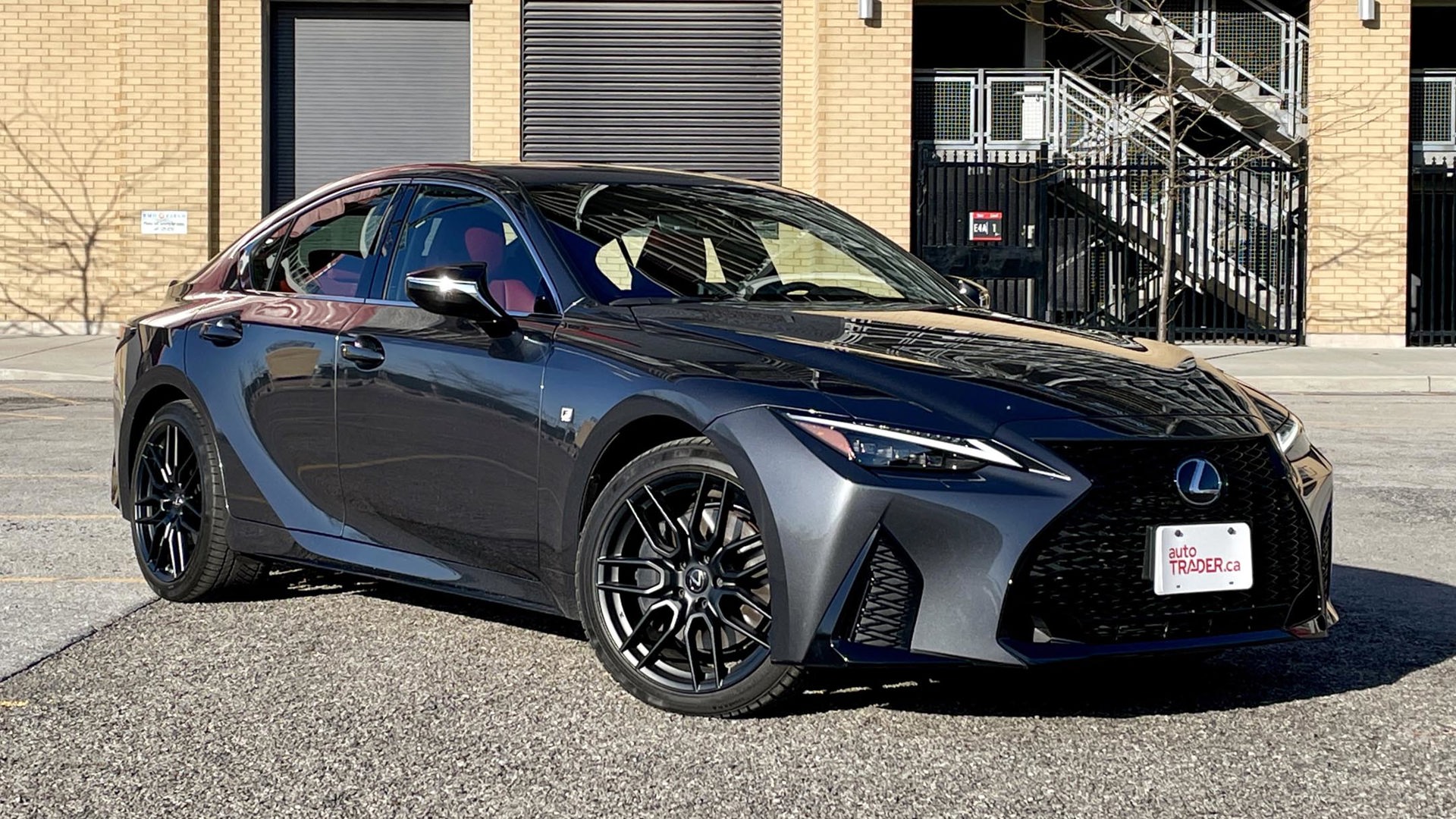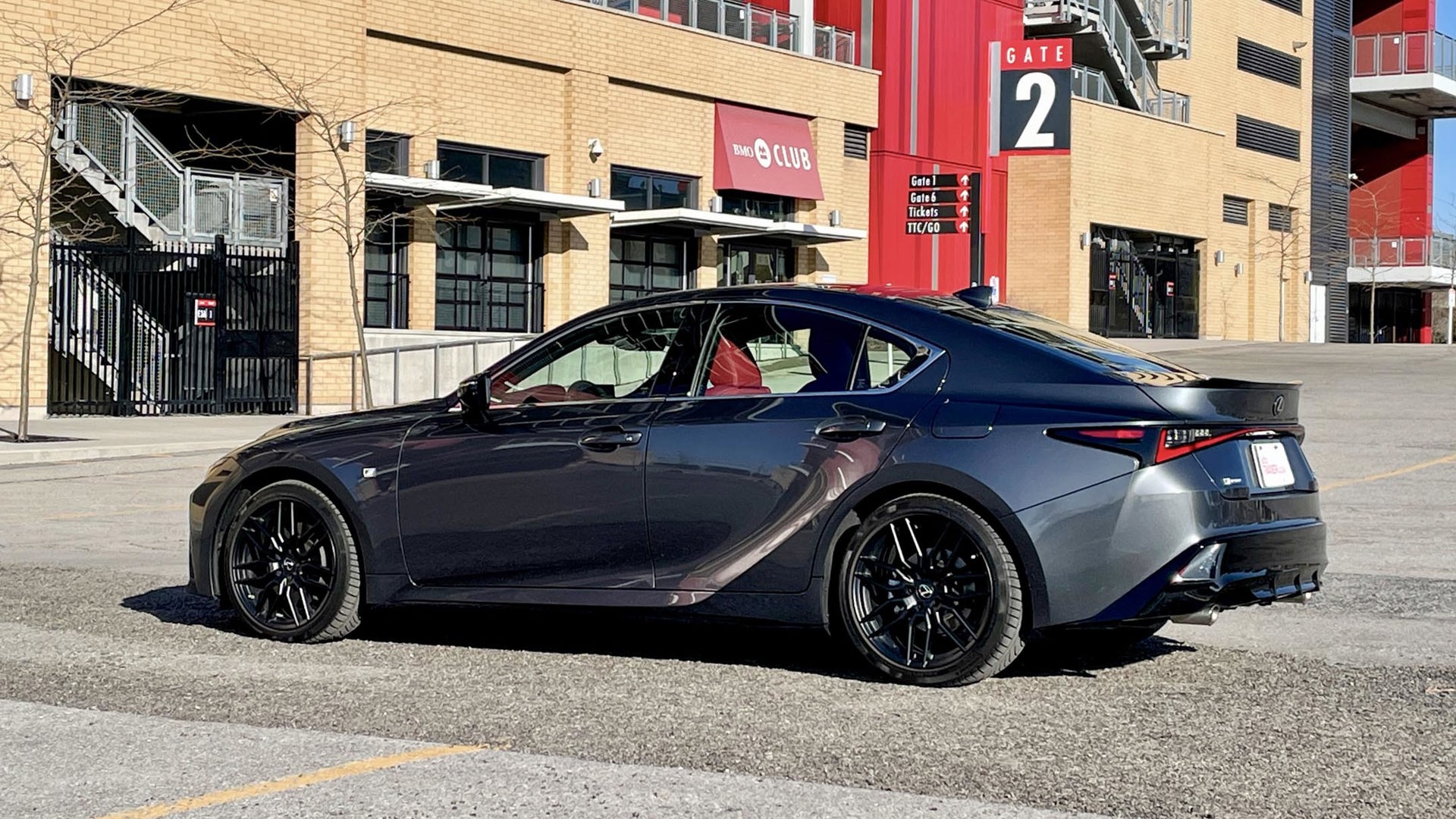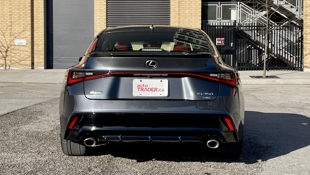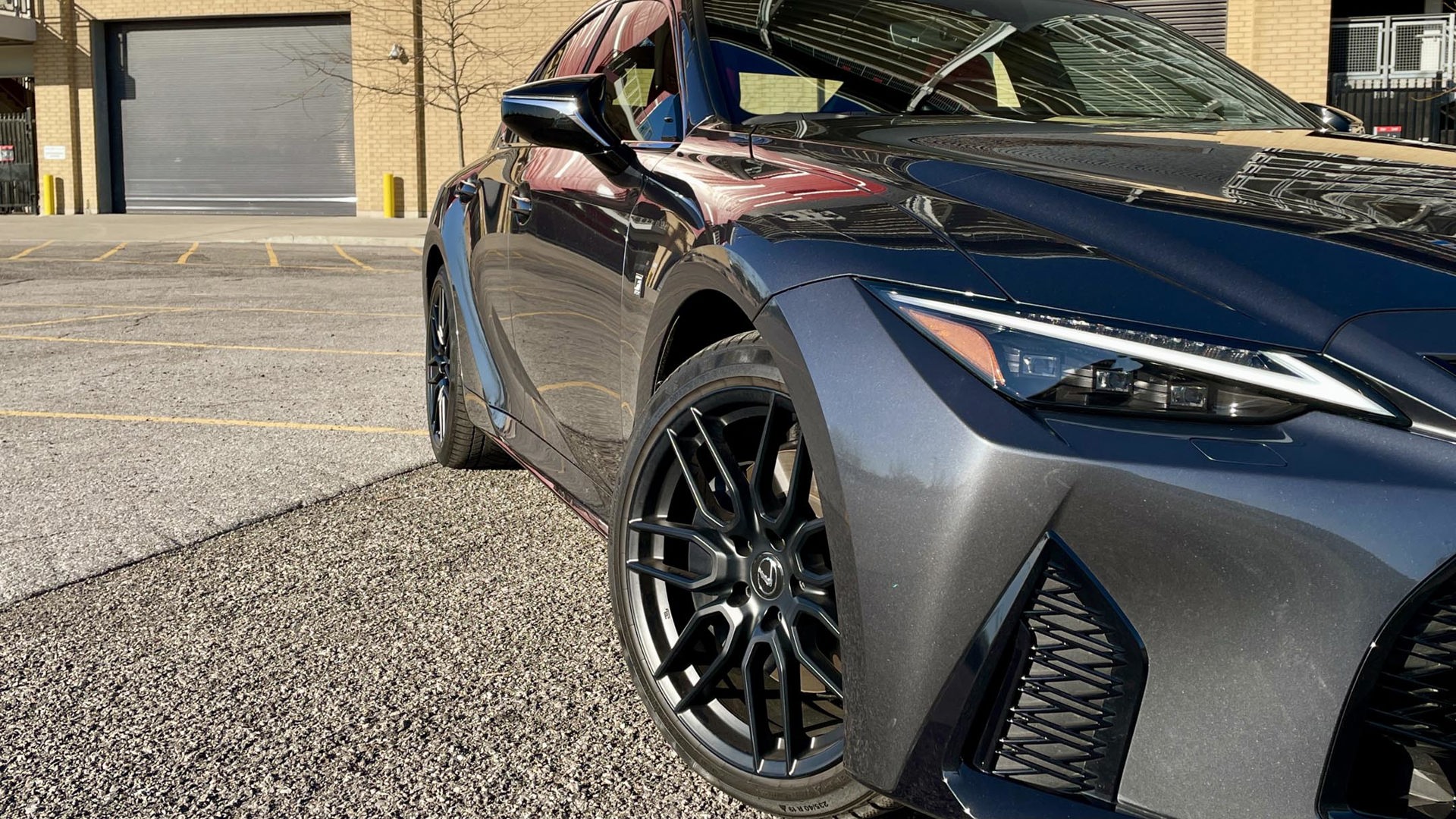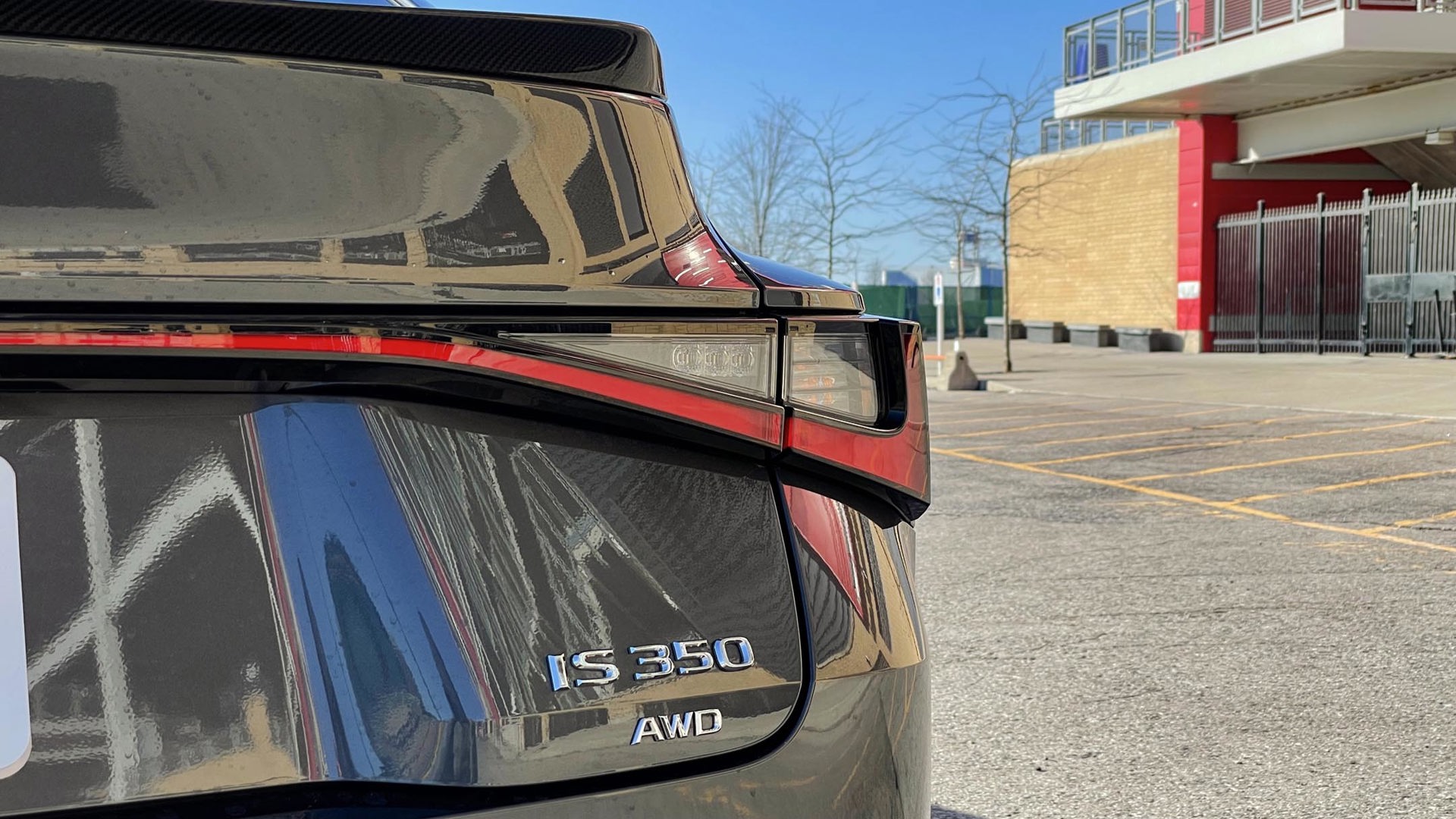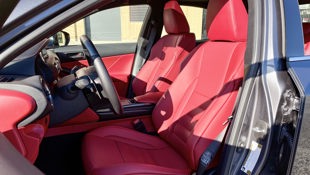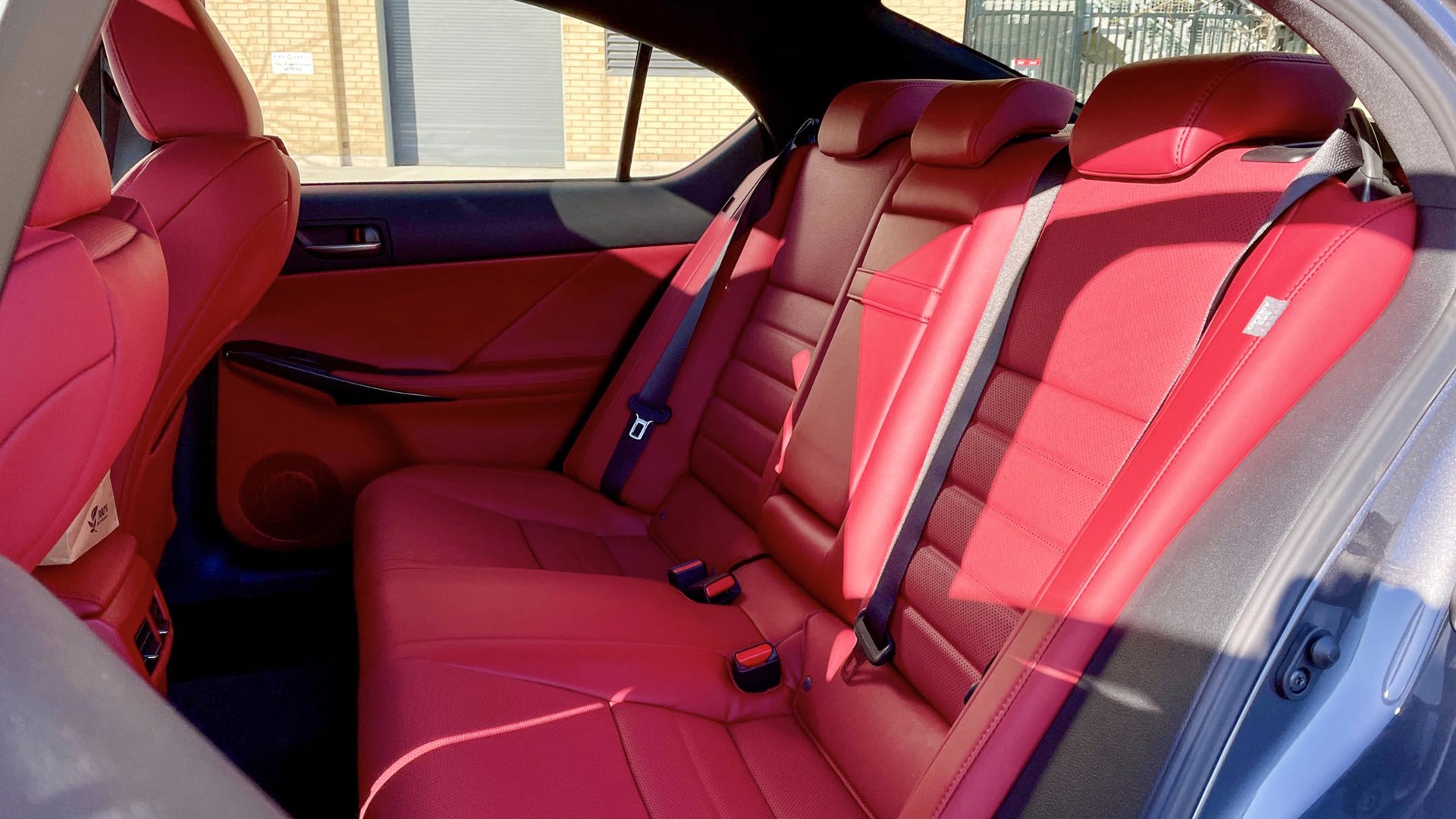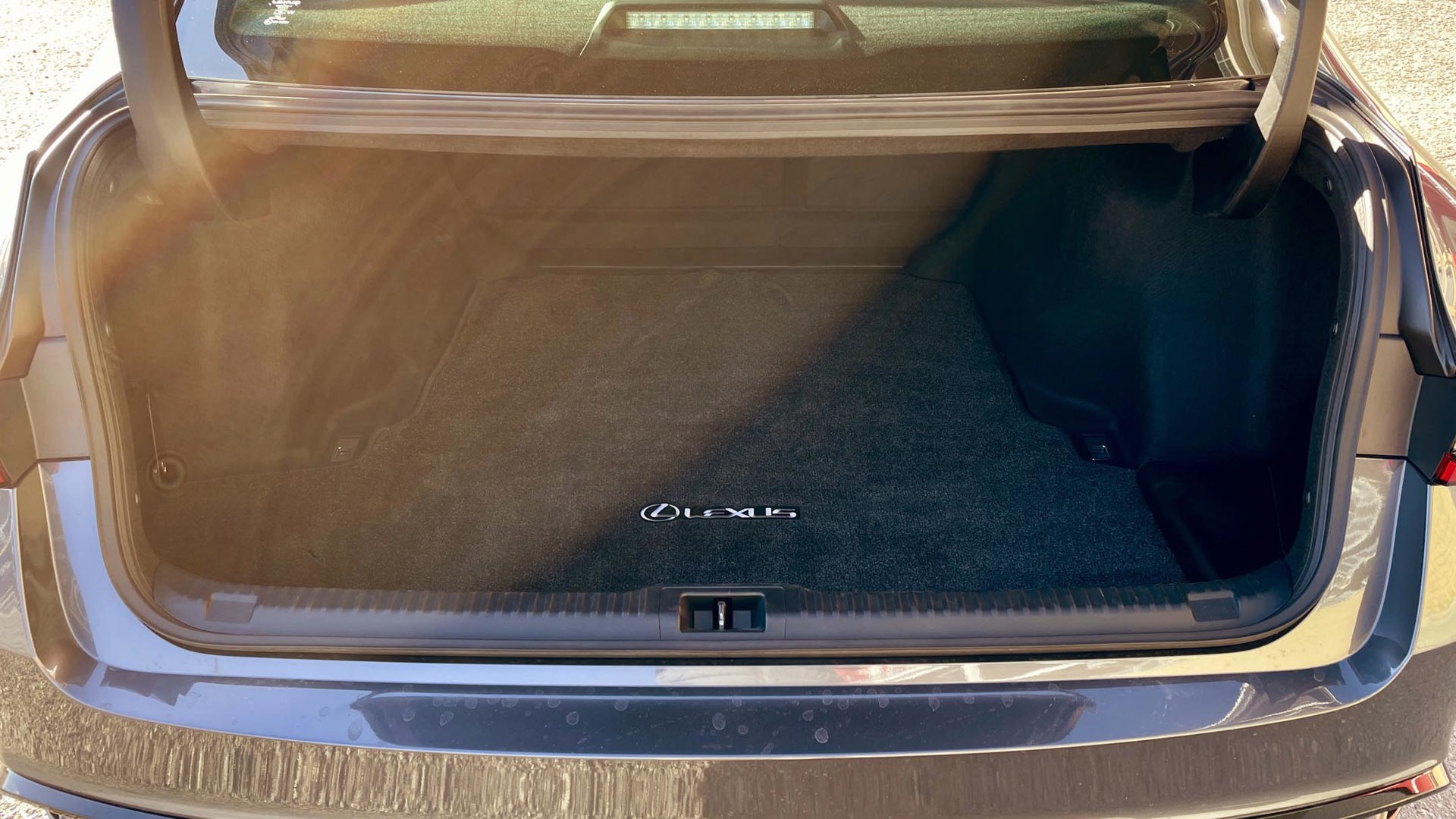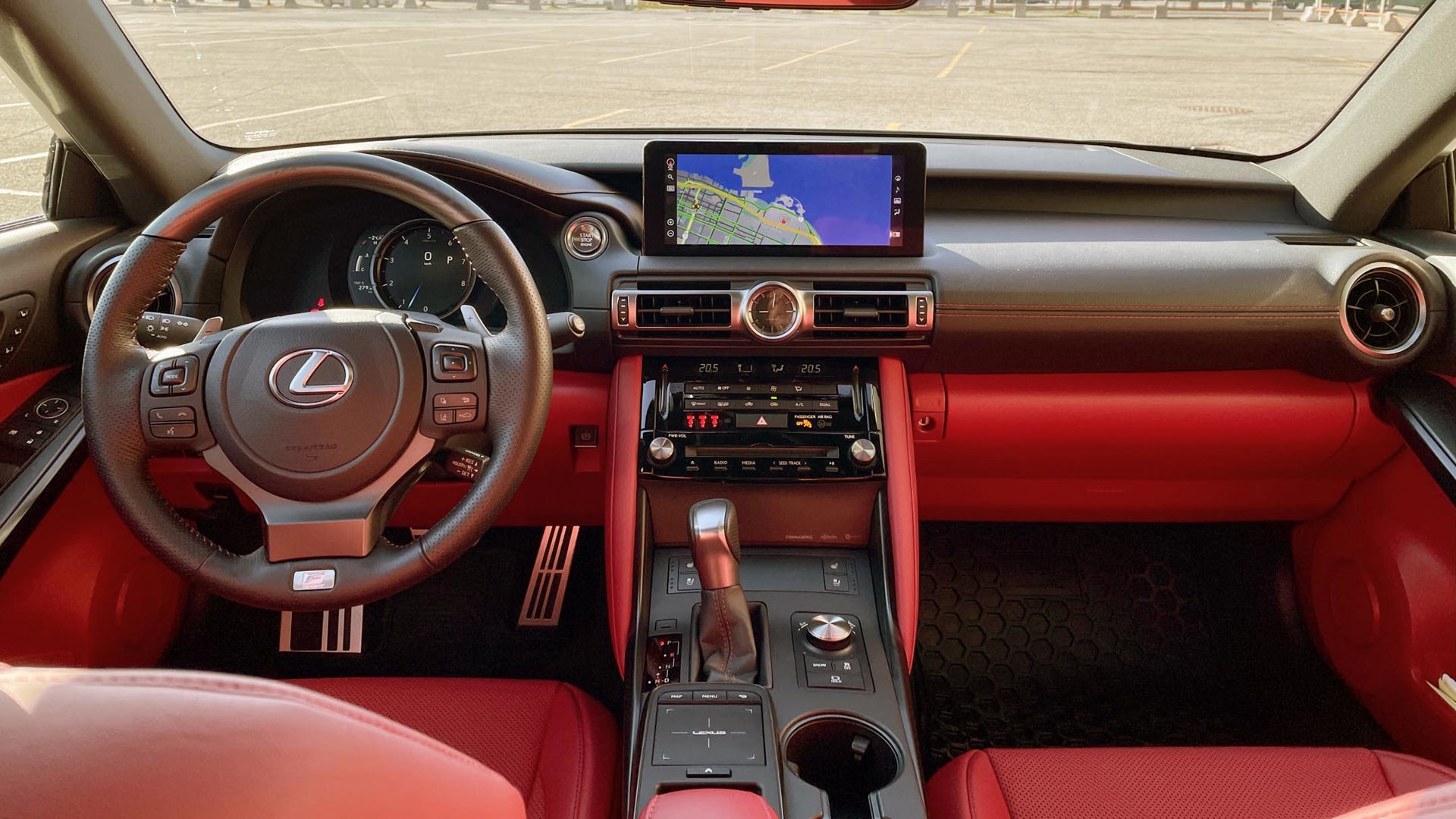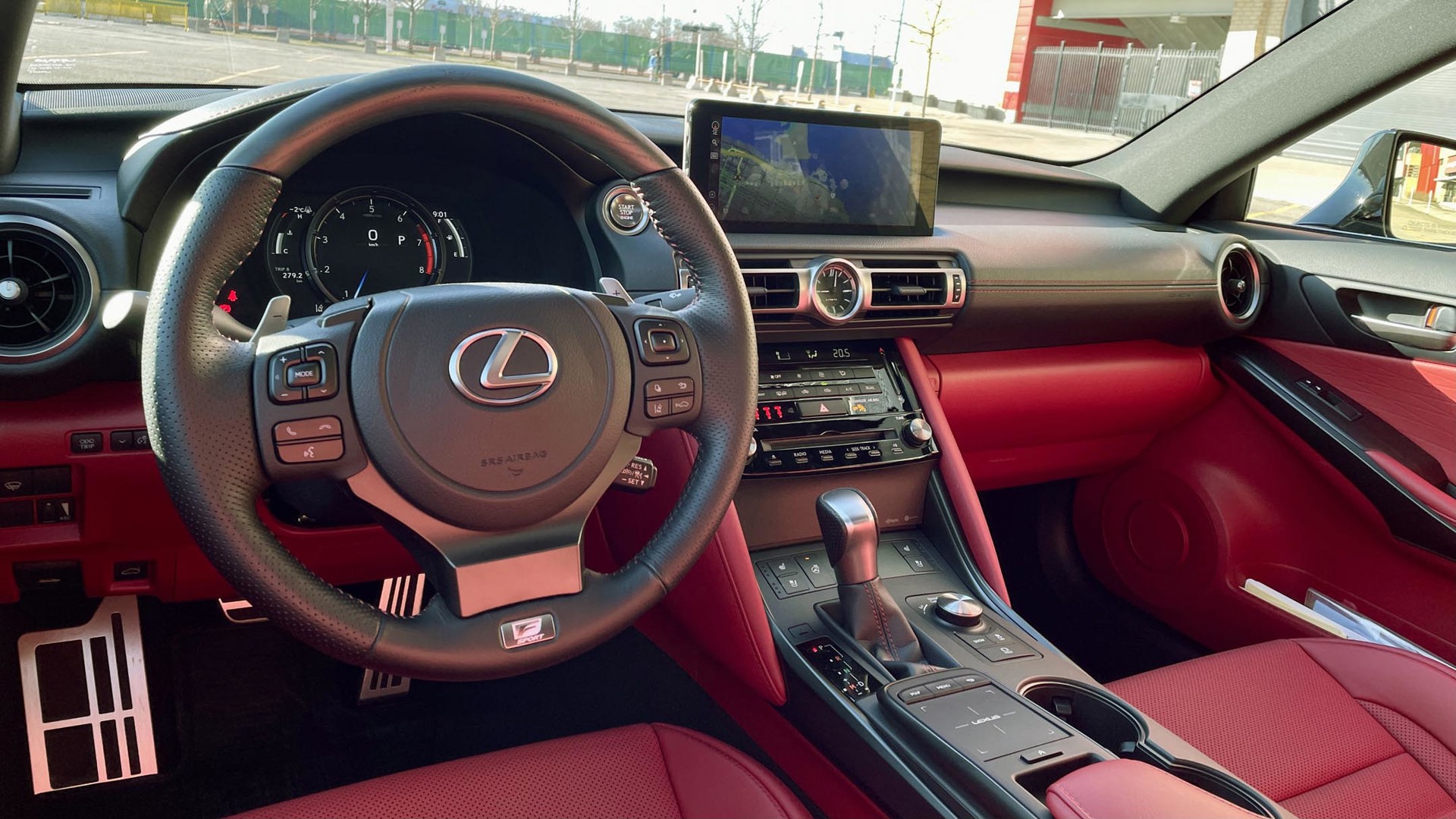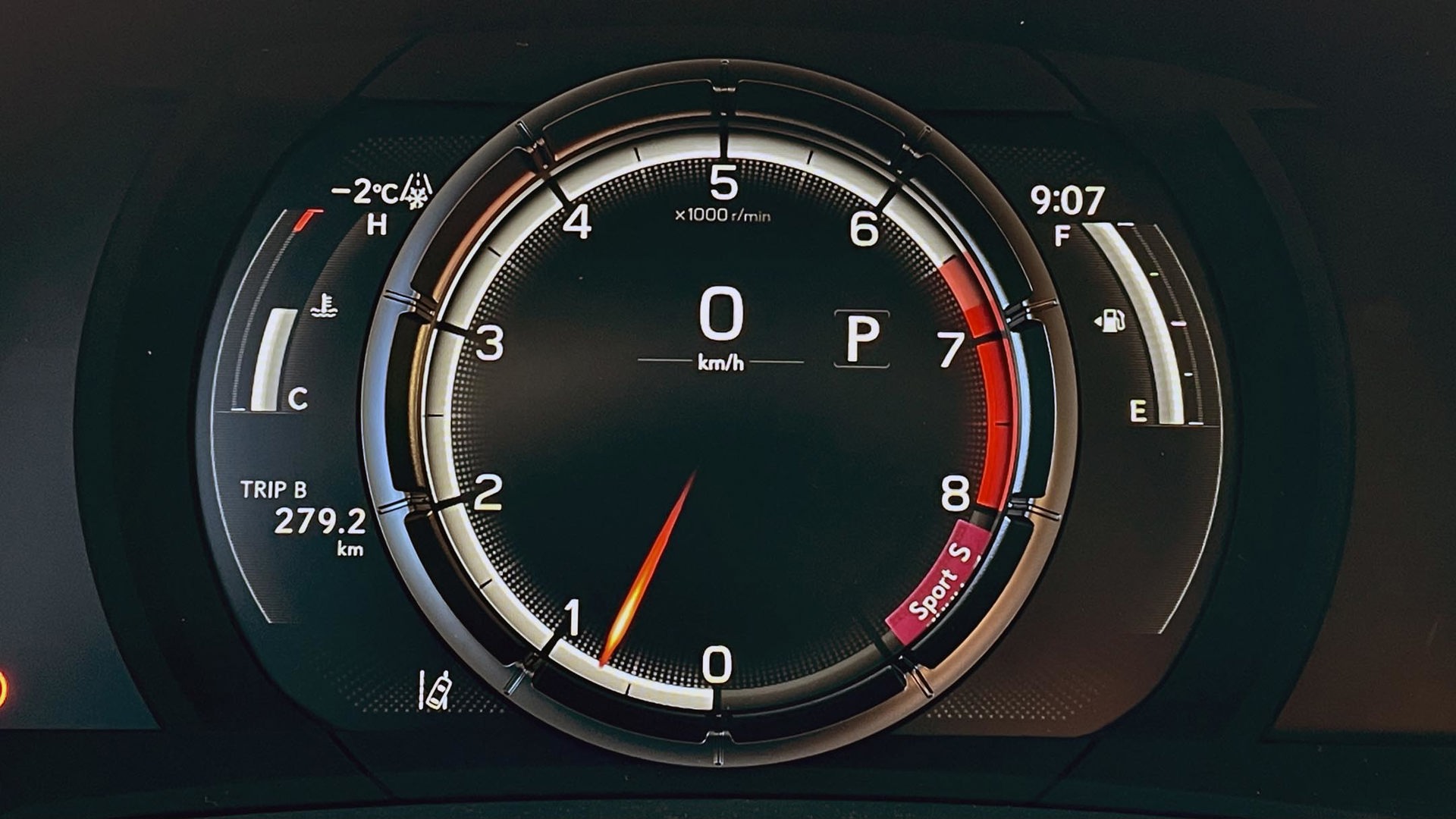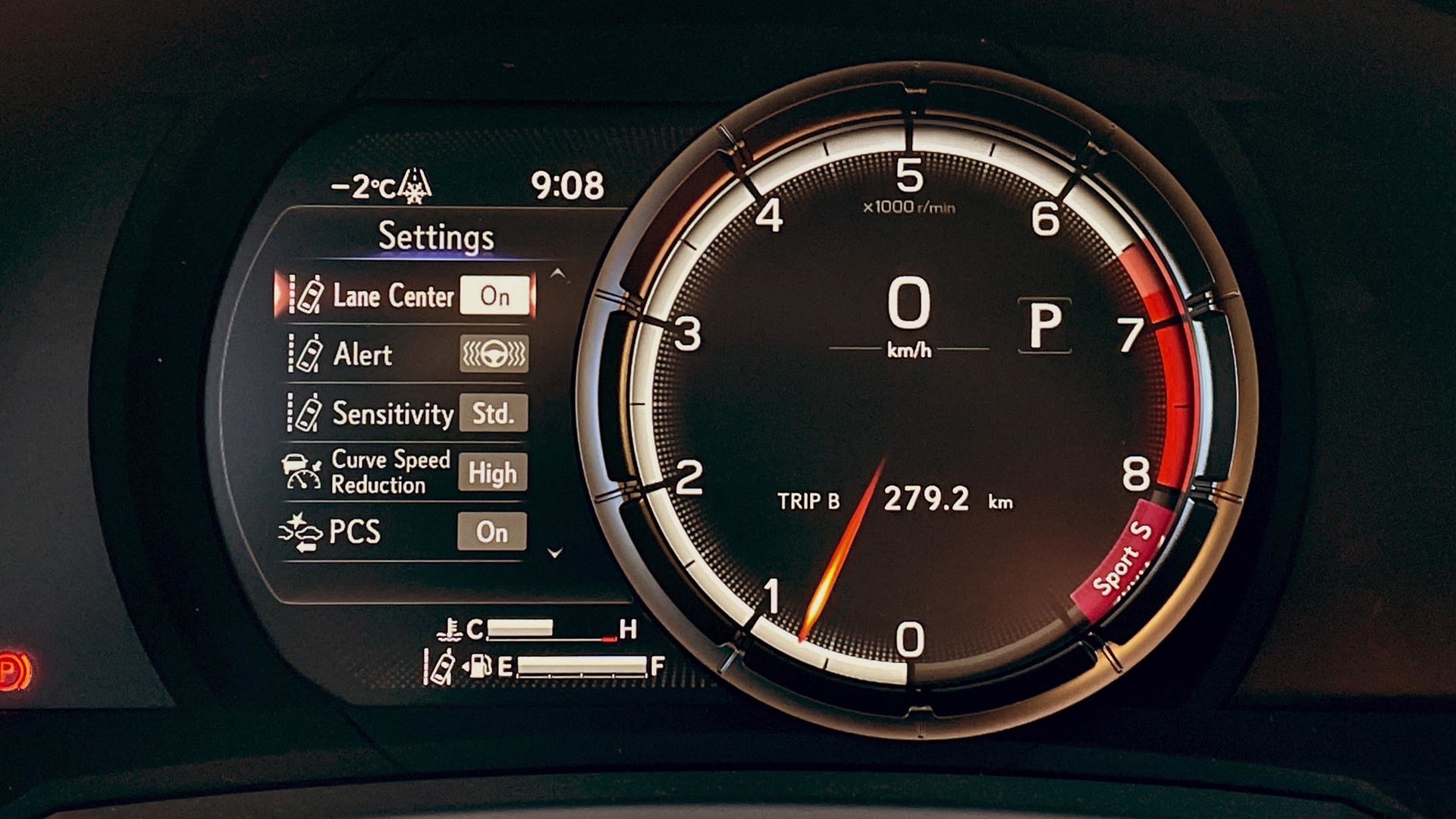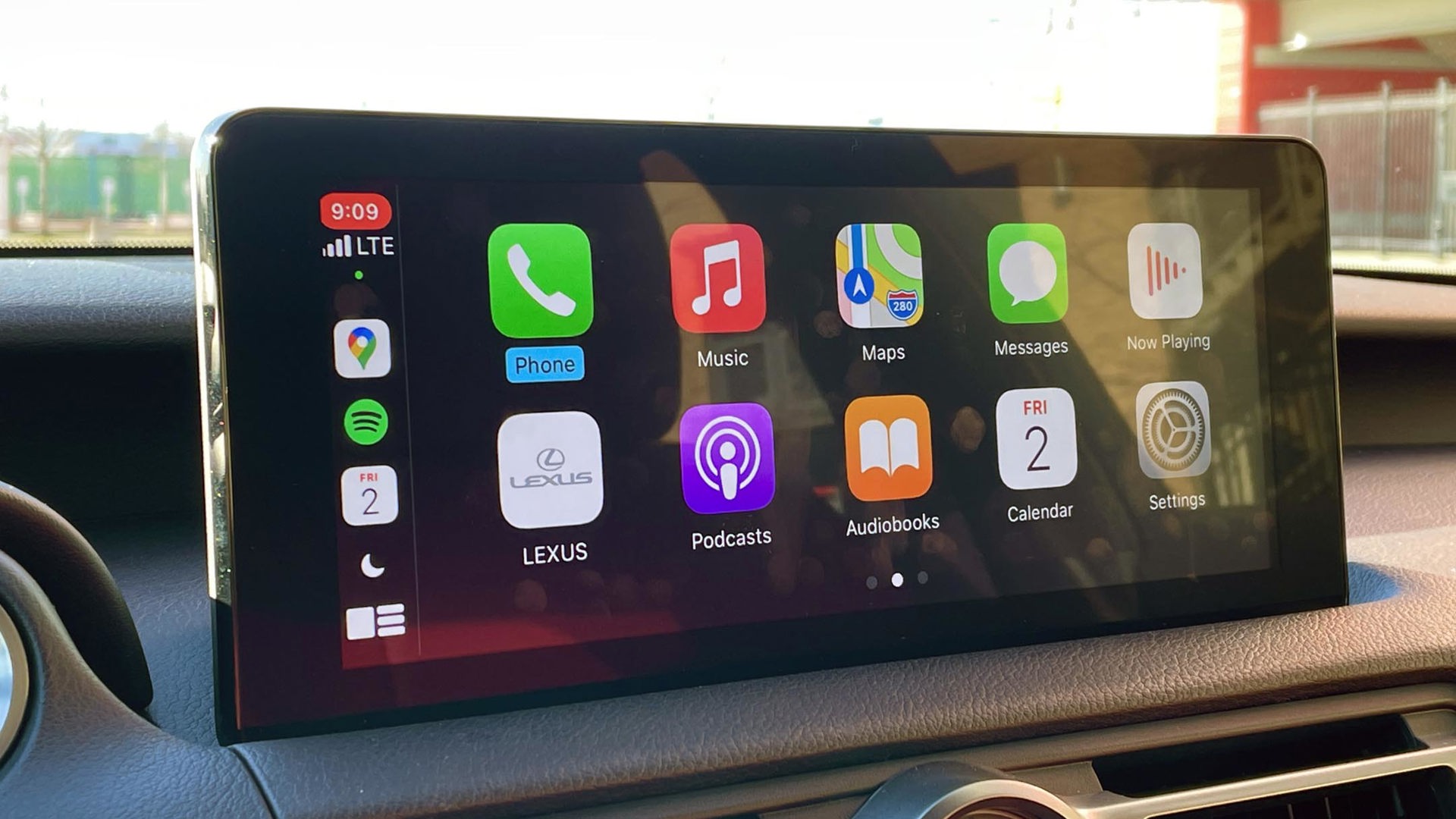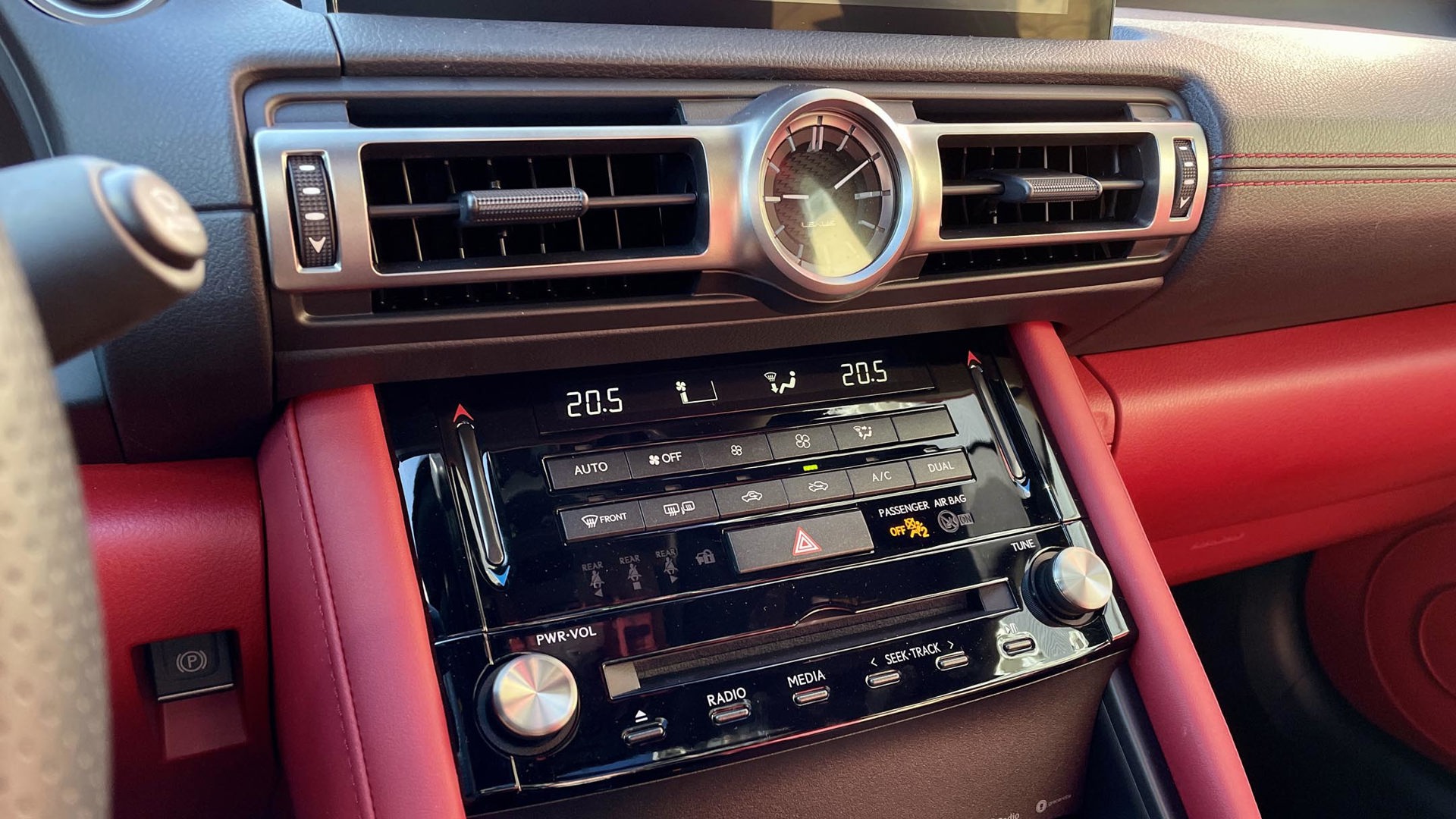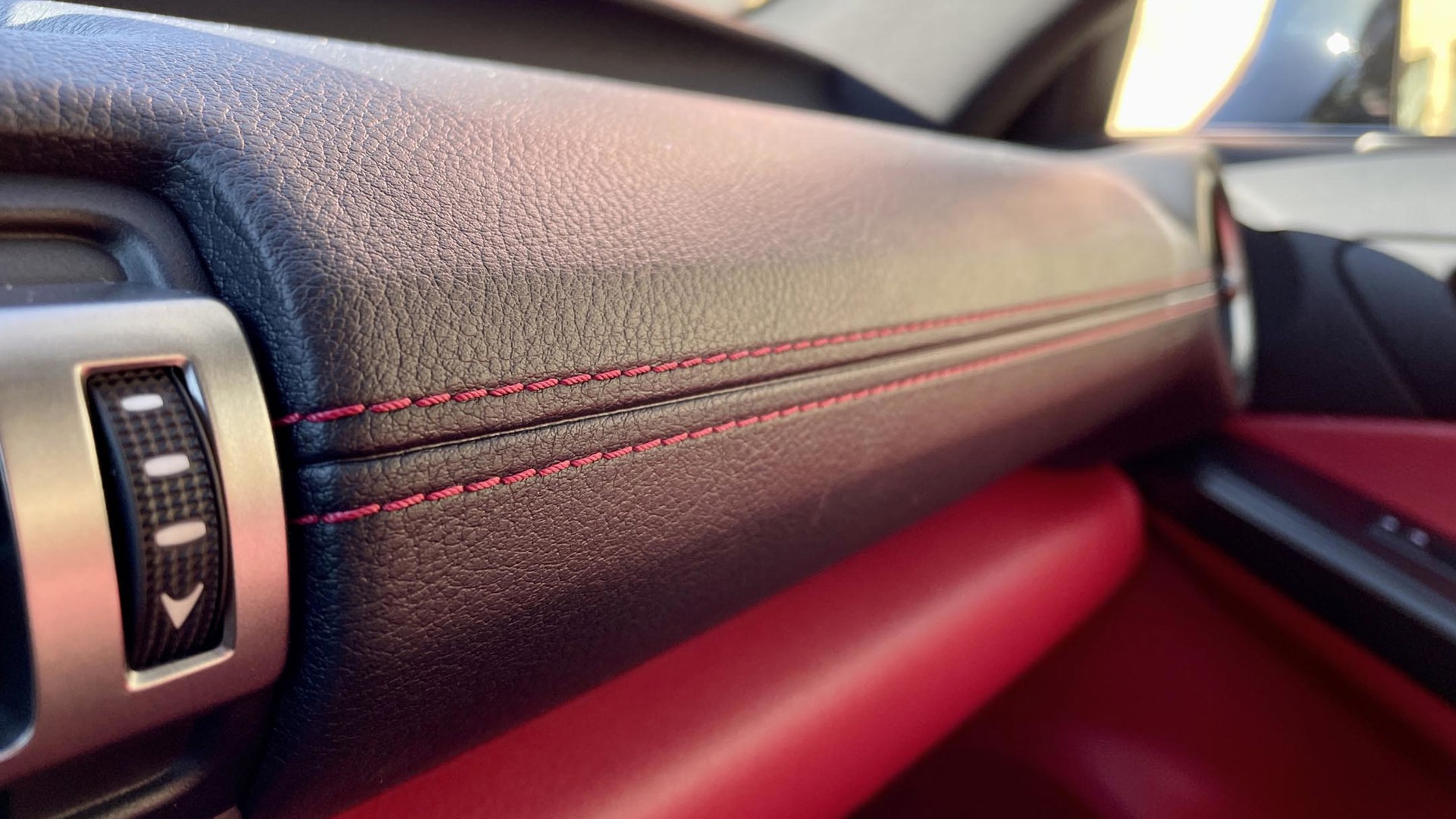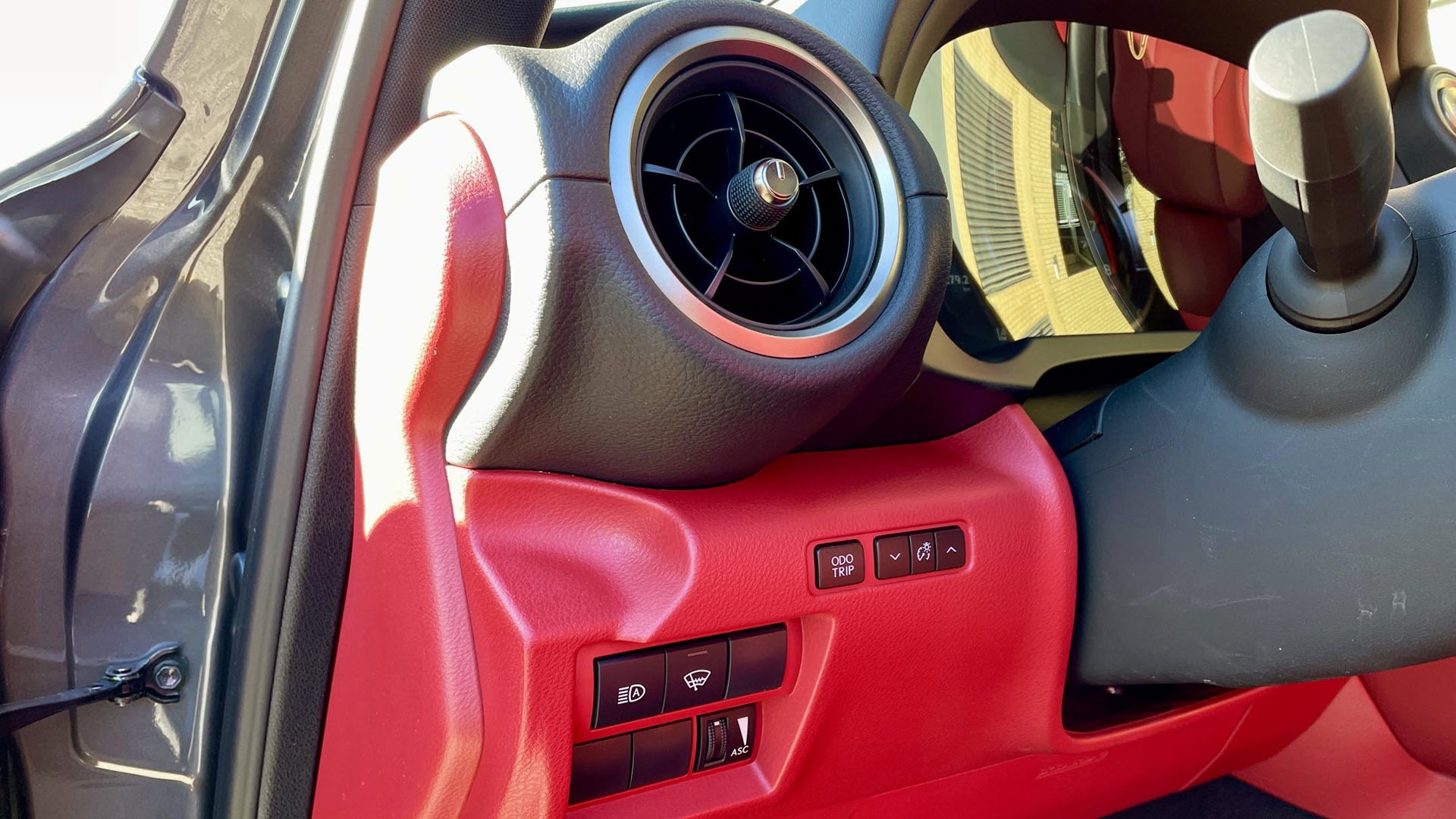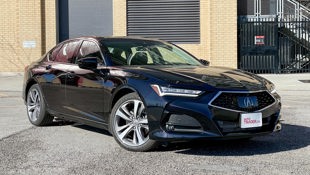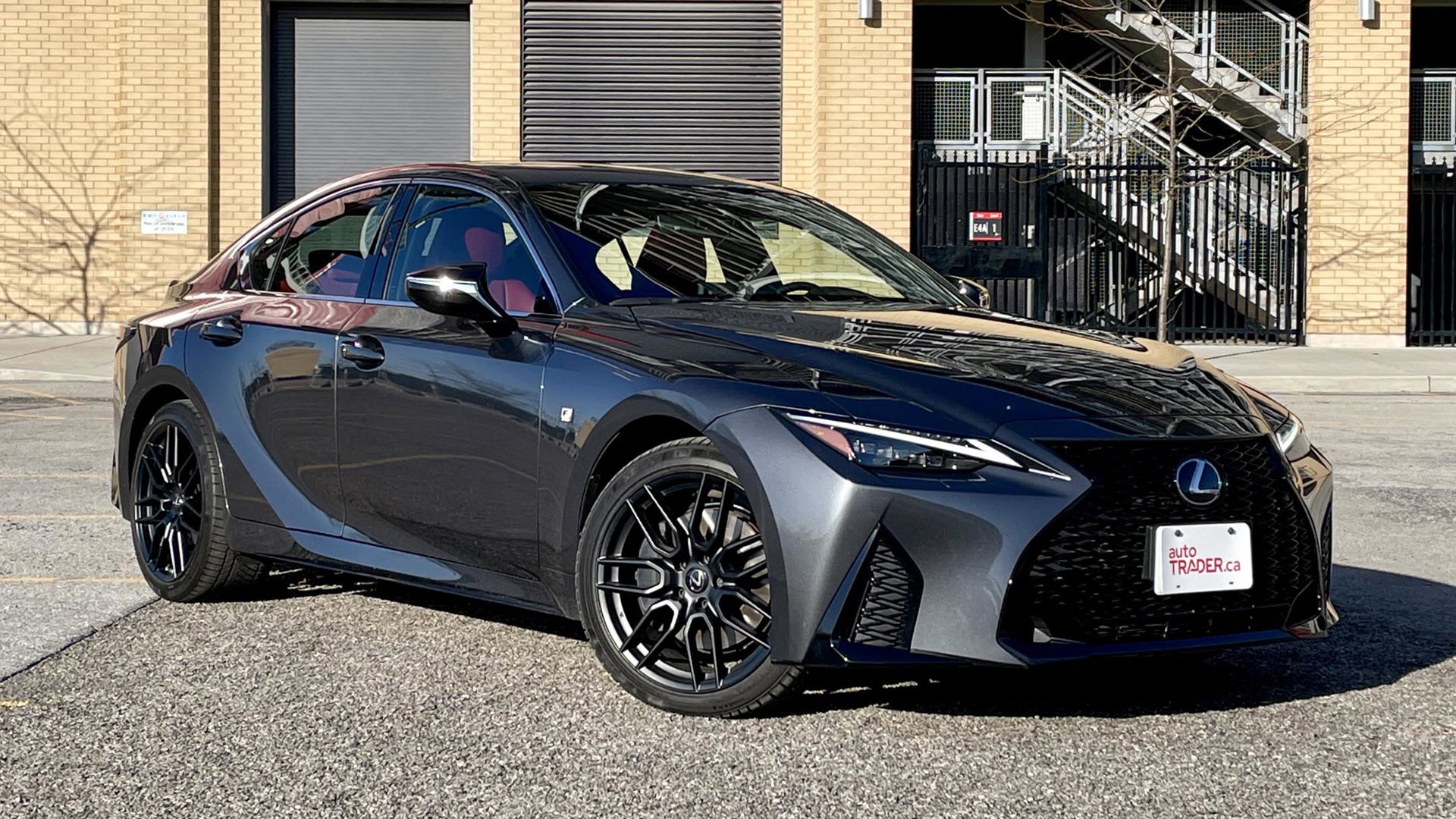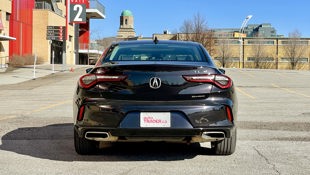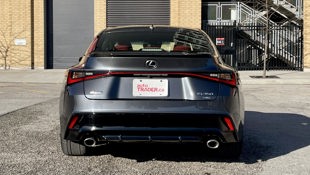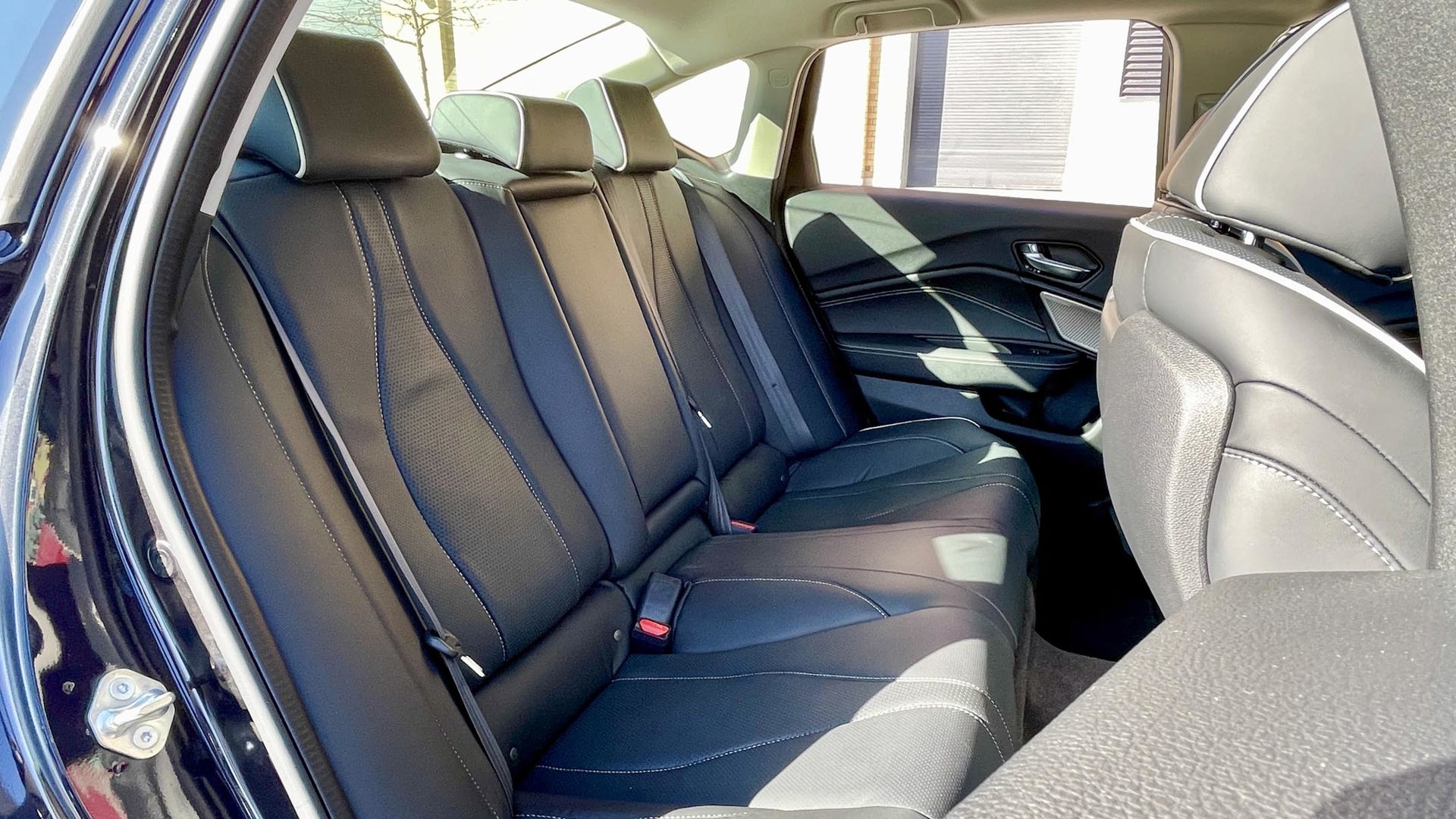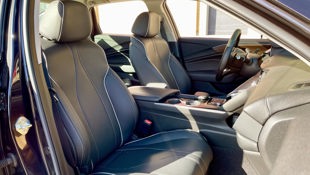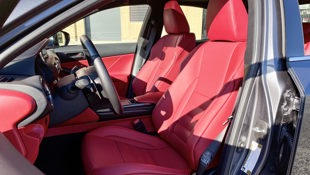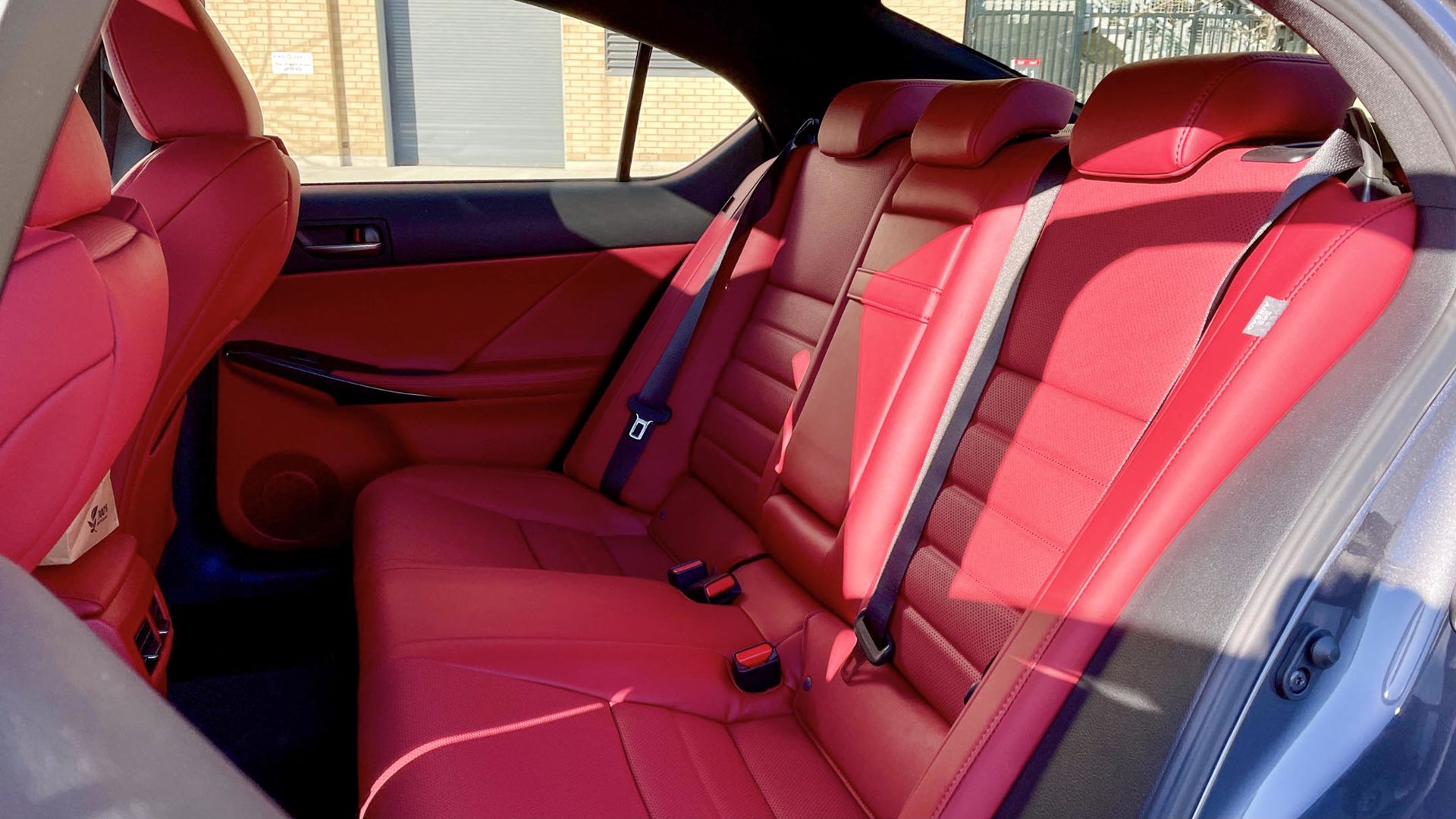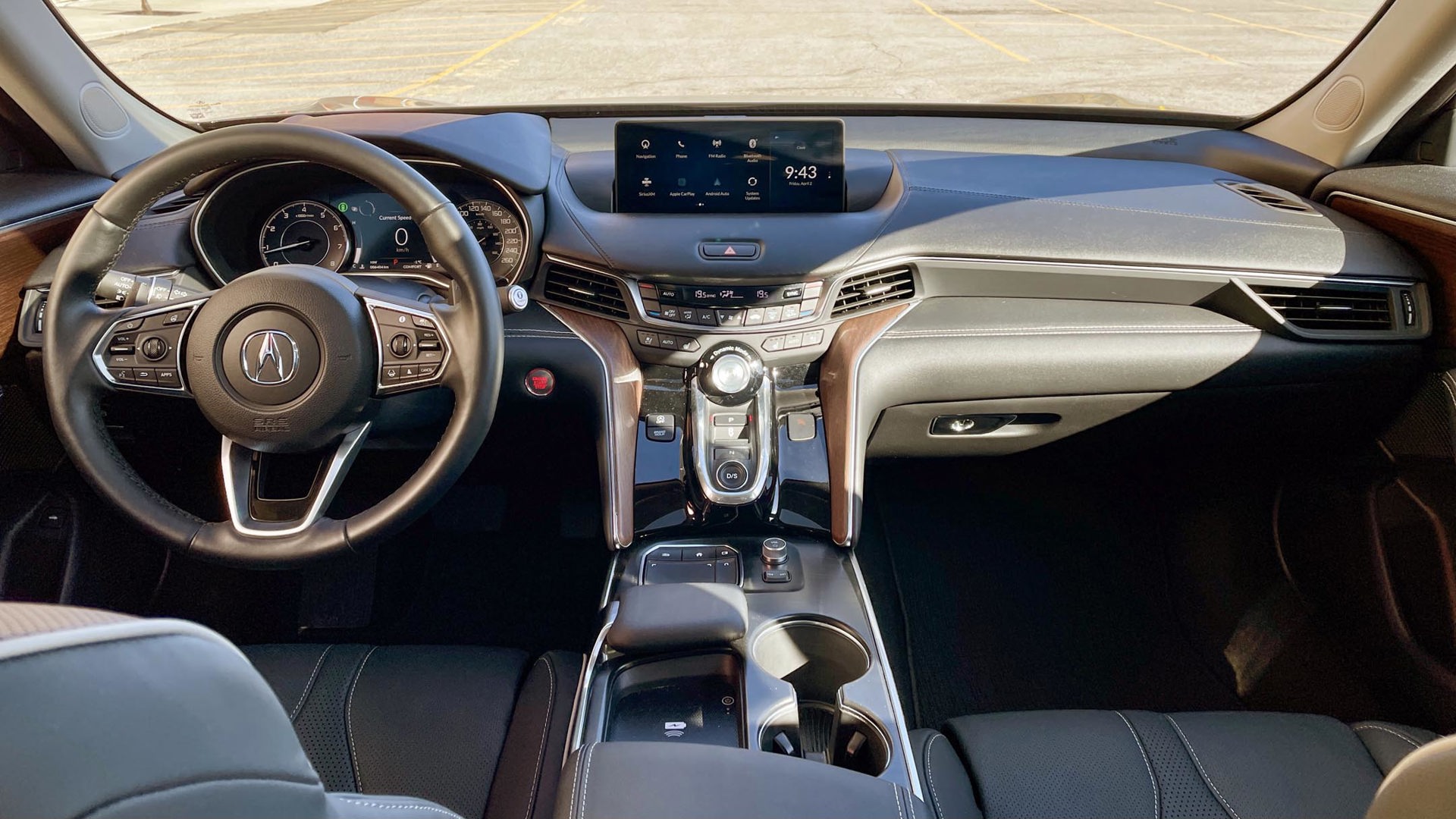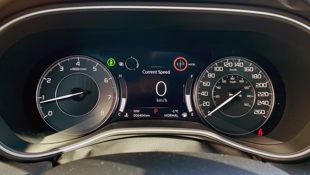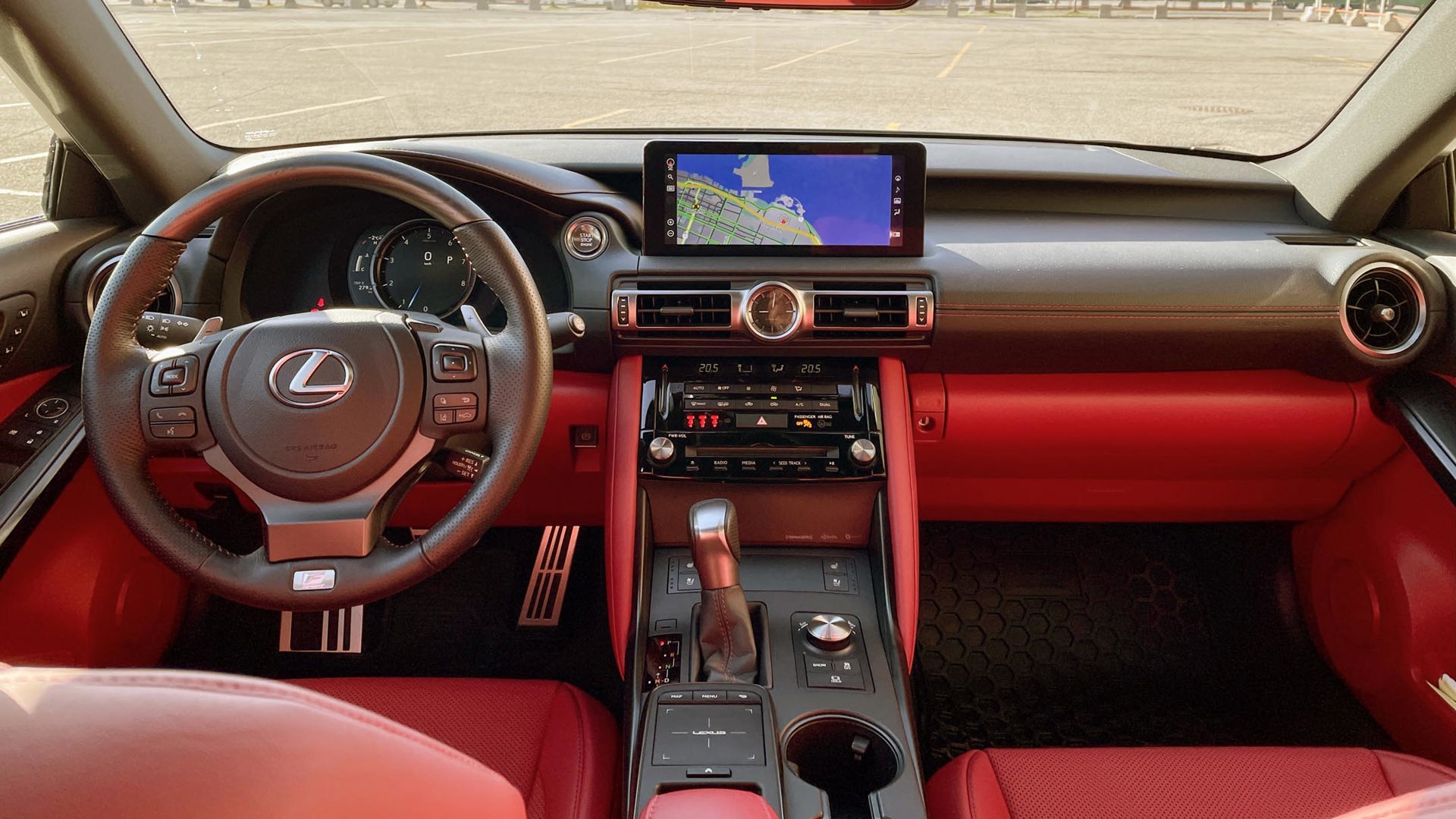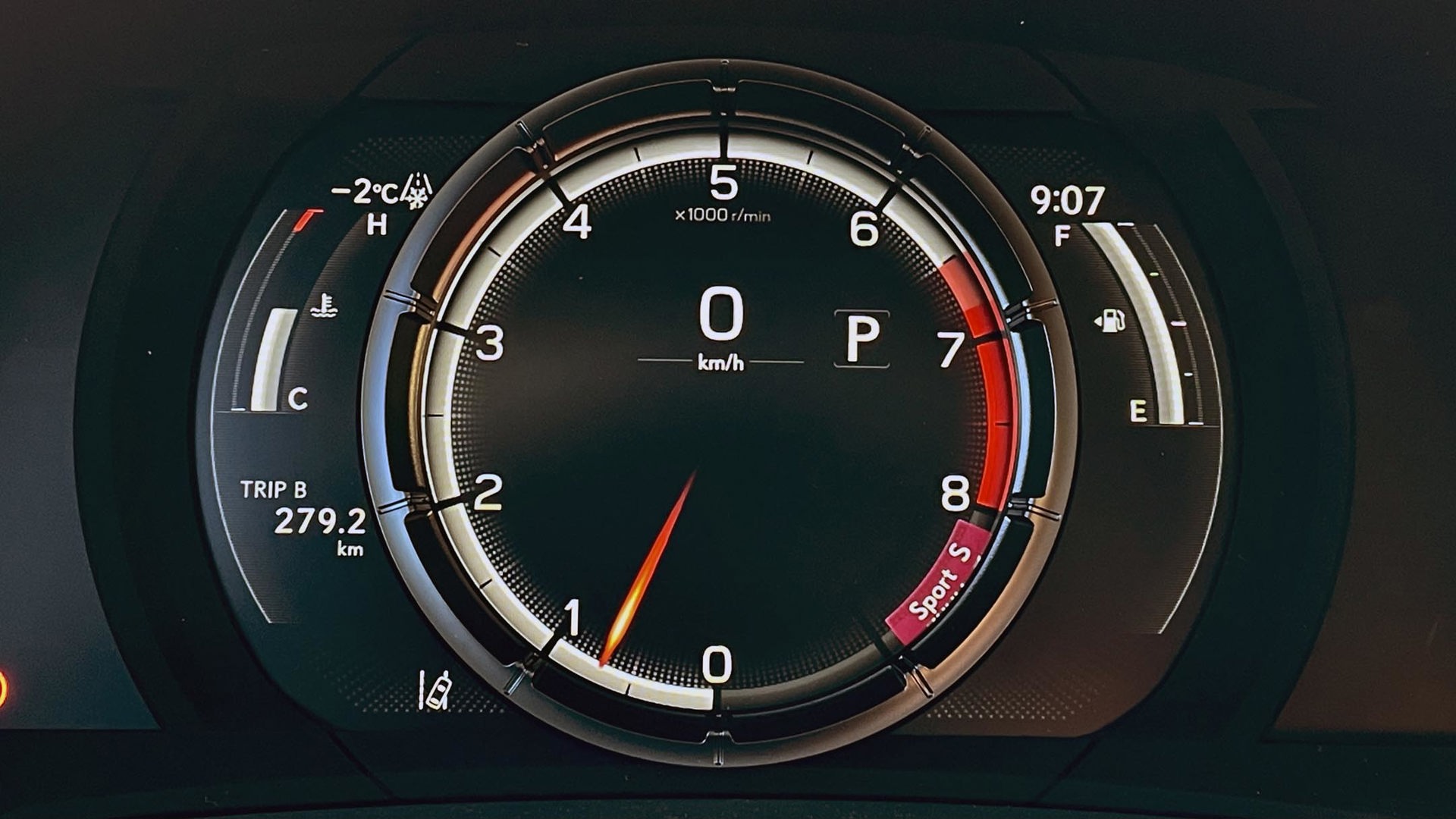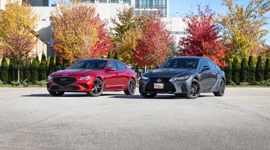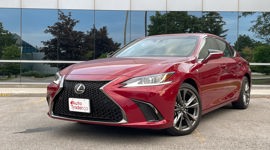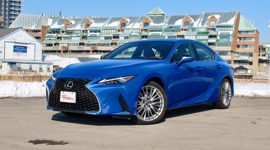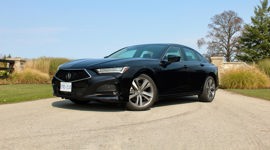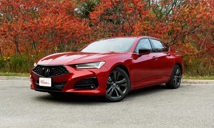Comparison Data
|
2021 Acura TLX Platinum Elite
|
2021 Lexus IS 350 AWD
|
|---|---|
|
Engine Displacement
2.0L
|
3.5L
|
|
Engine Cylinders
Turbo I4
|
V6
|
|
Peak Horsepower
272 hp @ 6,500 rpm
|
311 hp @ 6,600 rpm
|
|
Peak Torque
280 lb-ft @ 1,600–4,500 rpm
|
280 lb-ft @ 4,800 rpm
|
|
Fuel Economy
11.2/8.0/9.8 L/100 km cty/hwy/cmb
|
12.2/9.0/10.8 L/100 km cty/hwy/cmb
|
|
Cargo Space
382 L
|
306 L
|
|
Base Price
$51,690
|
$53,300
|
|
A/C Tax
$100
|
$100
|
|
Destination Fee
$2,075
|
$2,095
|
|
Price as Tested
$54,365
|
$60,195
|
|
Optional Equipment
$500 – Phantom Violet Pearl Paint
|
$4,700 – F Sport Series 3
|
Update (2021-05-04): An earlier version of this comparison erroneously stated that the IS outweighs the TLX. In fact, in their top trims the opposite is true. The version below has been corrected. We regret the error.
Sport utilities might be all the rage, but anyone looking for a small and sporty premium sedan is surprisingly spoiled for choice these days.
Of course, there’s the established trio of the BMW 3 Series, Mercedes-Benz C-Class, and Audi A4. There’s also the Cadillac CT4 or Volvo S60. The Infiniti Q50 exists, too, if you’re interested, but there’s also the beautiful Alfa Romeo Giulia and, if you’re OK with having to explain the badge to people, the fantastic Genesis G70.
If you’d rather have yours built by one of the auto industry’s juggernauts of reliability, you’re looking at either the 2021 Acura TLX or the 2021 Lexus IS – cars that have both been (coincidentally or not) overhauled for this year. And while both brands claim these are next-gen models, Lexus seems to be playing fast and loose with the definition, with the latest IS using the same chassis, powertrains, and interior as before, albeit with minor tweaks and some new sheet metal. The TLX, meanwhile, has been extensively reworked despite looking a lot like it did before, with a new platform and powerplants to go with a redesigned cabin.
Styling
Even though it isn’t quite the revitalized vehicle underneath that Lexus insists it is, this thoroughly reskinned 2021 IS looks outstanding with its razor-sharp lines and angles, sports-car-like rear haunches, and pleasantly on-trend full-width taillight bar. Its proportions are compact and punchy, the front end is perfectly aggressive, and those optional satin black 19-inch BBS wheels are very Fast & Furious.
While the outside of the Lexus is distinctly more attractive than its predecessor, the same cannot be said of the inside. The layout is largely the same as the one that debuted way back in January 2013. Heavily influenced by the LFA supercar’s cabin, it’s not an inherently bad design but it is getting very long in the tooth. Lexus has freshened the space by adding a big touchscreen, circular air vents, stitching on the dash, genuine wood on the steering wheel and door panels, and the bright Circuit Red upholstery option seen in this tester. But at the end of the day, the IS’s innards are thoroughly out-styled by that of the 2021 Acura TLX.
Acura’s middle sedan shines with a truly all-new interior that looks and feels just as – if not more – luxurious than the best cabins in this class. The TLX’s stitched leather, open-pore wood, and cold metal trim are properly upscale, and the LED ambient lighting can be set to 27 different themes.
The exterior isn’t quite as attractive. While clearly based on Acura’s gorgeous Type S concept, it just doesn’t dazzle as much in the metal as perhaps it could (or should). It doesn’t look bad, of course, as its vibe is lower and longer than the Lexus, and those rear fenders are delightfully wide. Perhaps the bigger wheels, vents, and spoilers of the upcoming TLX Type S will change it for the better, but as it sits this Platinum Elite tester is just a tad dowdy in comparison to the Lexus IS it’s up against.
TLX: 8/10; IS: 8/10
Features
Both being the fully loaded versions of their respective product lines, the basics – like dual-zone automatic climate control; keyless entry with push-button start; powered, heated, and ventilated leather seats; as well as Apple CarPlay and Android Auto – are all accounted for on both sedans; but the inherently newer TLX gains an impressive list of creature comforts that Lexus has yet to incorporate into the aging IS. Some noticeable omissions from the Lexus’s options list that are present in the Acura include a head-up display, wireless charging, ambient interior lighting, and auto stop-start.
For some reason, Lexus has even removed the awesome optional sound system from the IS 350, and it’s now exclusively offered as part of the less powerful IS 300’s Ultra Luxury package. The base stereo that came in the tester shown didn’t sound bad, per se, but it was no match for the stellar-sounding 17-speaker system in the TLX – a stereo that comes not only in the top Platinum Elite trim, but the sporty A-Spec as well.
TLX: 8/10; IS: 6.5/10
User Friendliness
It might look a little intimidating at first, but the basics of the TLX’s button-happy dashboard is actually quite easy to navigate. All of the physical switches and knobs are intuitively placed, reachable, and smartly laid out, button-based gear select module included. Using the infotainment, however, is a bit of a different story.
Acura has opted for a non-touch 10.2-inch infotainment screen controlled by a concave touchpad located low on the centre console. It may look like the touchpad on your laptop, but it works completely differently. Instead of swiping a cursor around like you would on your computer, Acura’s system uses something called “absolute positioning.” Touch the top-left corner of the pad and you’ll select the top-left corner of the screen, and so on and so forth. It kind of makes sense in theory: Acura has effectively deconstructed the touchscreen, allowing the display to be positioned far and into the driver’s line of sight, but with the entire touch element closer to the driver’s hand so they don’t have to reach very far to use it. Best of both worlds, right?
In practice, however, it’s more than a little cumbersome and is probably more distracting than just a good ol’ touchscreen. It wasn’t too bad when selecting between big, evenly spaced options like the ones presented in the system’s main menu; but try to do anything more involved like scroll through radio presets or input an address and you’ll be wishing Acura wasn’t so innovative with its infotainment choices. To make the experience even more frustrating, the touchpad ditches the whole “absolute positioning” approach and reverts to more of a laptop-style setup when running Apple CarPlay, requiring you to unlearn all that you just mastered.
The Lexus’s newly touchable infotainment system, on the other hand, easily takes the win on interface interactivity, but there are a couple of basic usability gripes that hold it back from outscoring the Acura outright when it comes to user-friendliness. The IS’s back-up camera, for example, is inexcusably low-res and squared-off. Clearly made with an older model’s screen in mind, the digital view of what’s behind this sedan is accompanied by a set of black bars on either side, which made reversing feel like watching the four-hour director’s cut of a certain superhero movie in old-school 4:3 format.
I’m not a fan of the IS’s touch-sensitive HVAC temperature sliders that beep quite loudly every time they’re used and, for some reason, this Lexus still uses an old BMW-style turn signal stalk that always reverts to the same position and requires a weird half-press in the opposite direction after a lane change. I did get used to it after a while and, admittedly, it did lend to a quieter turn signal experience; but the Lexus indicators will seem like a needless source of frustration if you’ve been using old-fashioned, clicky stalks for literally decades.
TLX: 7/10; IS: 7/10
Practicality
Judging by each of these cars’ exterior dimensions, you’d think the Acura is the more spacious car inside, but much of the extra real estate is dominated by that stylishly long hood. Breaking out the tape measure, the two are actually matched more closely than one might assume.
The Lexus features more legroom for front passengers but loses out to the longer-bodied Acura when it comes to rear-seat legroom. When it comes to headroom, the slightly taller, more upright IS is more spacious than the TLX in both rows while the Acura is victorious when it comes to both shoulder- and hip room.
Humans, however, aren’t all these cars will be carrying around and when it comes to transporting stuff, the Acura tips the scales in its favour with a significantly bigger trunk (382 L compared to 306 L) as well as larger, better-placed cupholders and an overhead cubby for sunglasses – a feature the Lexus (frustratingly) doesn’t have.
TLX: 8/10; IS: 7.5/10
Comfort
In fully loaded form, both the TLX and IS feature adaptive suspension, and even in their hardest, sportiest settings neither car feels especially harsh, with both providing reasonably comfy rides for cars of this type. However, the Lexus does ride a tad firmer than the Acura but compensates with slightly comfier, better contoured seats that remain cozier for greater lengths of time.
In terms of comfort-oriented bells and heated/cooled whistles, the Acura handily takes the win. While both vehicles feature heated and ventilated front seats as well as a heated steering wheel, the TLX Platinum Elite is the only car in this comparison to offer heating for the outboard rear seats, adjustable bolsters for the front row, and a heated steering wheel that actually heats the entire wheel. Lexus, for some reason, has chosen only to heat the leather-wrapped sides of the IS’s steering wheel.
TLX: 8/10; IS: 7.5/10
Power
Open up the hoods of the Lexus IS 350 and Acura’s new TLX and you’ll find a pair of engines that deliver a fairly similar amount of pace cooked up in fairly different ways. The Acura uses a turbocharged 2.0L four-cylinder making 272 hp and 280 lb-ft of torque. The more old-school Lexus, meanwhile, uses a 3.5L V6 with no turbos that makes 311 hp and, just like the TLX, 280 lb-ft of torque.
With identical peak torque figures and the Lexus packing more power, you may be tempted to assume that the IS 350 is the quicker, faster car, but there’s a bit more to the story than that. Because the Acura is turbocharged, its available torque comes on much earlier, with all 280 lb-ft being available at just 1,600 rpm. The Lexus’s 280 lb-ft only arrives at a rarely used 4,800 rpm. The result? An Acura that was much peppier around town at relatively low speeds than the competing Lexus. Admittedly, the difference wasn’t exactly night and day, but it was there. At higher speeds, however, the Lexus’s bigger engine showed its might and felt noticeably stronger and more willing to propel you into “highway-plus” speedometer readouts.
The IS 350’s V6 also sounds better than the TLX’s four-pot. The Acura’s smaller, more fuel-efficient engine sounds gravelly and rough at low revs and almost buzzy at high ones, while the Lexus’s six-cylinder sounds deeper, more mechanical, and a bit like a V8 with two cylinders ripped off. It’s a surprising highlight of the IS’s driving experience.
TLX: 7/10; IS: 8/10
Driving Feel
Let’s get this out of the way early: neither of these cars are as exciting or rewarding to huck down a twisty road as the best-driving cars in this class. However, they aren’t bad in their own rights.
The Acura TLX is responsive and smooth, and its chassis feels sophisticated and light like a Honda product should. For better and worse, it drives a bit like a tighter, more buttoned-down Honda Accord. Compared to the Lexus, it moves more nimbly, feels more fleet of foot, and steers quicker and with a smidge more feel.
Lexus’s IS, meanwhile, is heavier yet more compact. Pair that with a decidedly more rear-biased all-wheel drive system with heavier, less feelsome steering and the IS’s running gear, much like its powertrain, delivers a more classically luxurious flavour of performance behind the wheel.
Both cars’ brakes are strong without being jerky. Their steering racks are decently calibrated, becoming light when you want them to be light and heavy when you want them to be heavy. Although, the Acura’s steering provides a wider range of steering weight accessed by switching through the car’s comfort, normal, and sport driving modes; an act that happens to trigger some cool animations in the centre screen. Similarly, the shifting LFA-style digital tachometer that adapts to the IS’s chosen drive mode isn’t bad either.
Let loose on a backroad, both the Acura TLX and Lexus IS can be summed up as moderately entertaining, with the Lexus providing the bigger, better sounding gun under the hood and a more rear-biased, grand tourer-like demeanour, while the Acura hits back with lighter, more sports-car-esque dynamics.
TLX: 7.5/10; IS: 7/10
Fuel Economy
According to Natural Resources Canada (NRCan), the smaller-displacement, turbocharged Acura unsurprisingly pips the bigger-bore Lexus when it comes to fuel economy. The TLX returns 11.2 L/100 km in the city, 8.0 on the highway, and 9.8 combined, while the IS 350 tested is rated at 12.2 L/100 km in the city, 9.0 on the highway, and 10.8 combined.
In addition to being more efficient, Acura also only recommends you fuel the TLX with 91-octane fuel (87 is required) while Lexus has premium gas as a hard, official requirement. Either way, you should probably feed your shiny new TLX with the best fuel you can afford if you’d like to get the most out of it, but it’s nice to know the car will be fine if for whatever reason the higher-octane stuff isn’t available or tenable. (As an added bonus, the TLX’s capless fuel filler is a welcome feature that feels very appropriate given these touch-phobic times.)
TLX: 7.5/10; IS: 6.5/10
Safety
Both the TLX and IS feature semi-autonomous driving tech like adaptive cruise control and technologies that help keep you in your lane of travel. The TLX, however, benefits from a nifty, next-generation front passenger airbag that’s shaped like a baseball mitt.
When put through United States National Highway Traffic Safety Administration (NHTSA) crash tests, both cars scored five stars overall, but the Acura fared marginally better than its Lexus rival when it came to head-on collisions. In the frontal crash test, the TLX earned five stars on the driver’s side and four stars on the passenger side, while the IS bagged four stars for both driver and passenger.
TLX: 9/10; IS: 8.5/10
Value
Historically, products from Acura and Lexus were known for providing value in relation to their pricier and perhaps more prestigious rivals from Europe. With the TLX, that premise mostly holds true, but it’s difficult to call the Lexus – as it sits, at least – a good value buy.
As tested, the Acura TLX Platinum Elite rings in at $54,365, while the Lexus IS 350 F Sport costs $60,195. Based on those numbers alone, it would be reasonable to assume the Lexus to be the better-equipped vehicle but, as we already learned, it is not.
That’s also awfully close to BMW M340i territory – a car that’s not only a cut above in terms of performance and prestige, but inherently a much newer product. The 365-hp Genesis G70 3.3T Sport can also be had for an all-inclusive $58,000. Do with that information what you will.
In fairness, though, much of the as-tested premium for the Lexus appears to go towards that 311-hp V6, because if you opt for a less powerful version the IS can be had for much cheaper. The 260-hp IS 300 AWD, for example, comes with the same 3.5L V6 in the 350 – albeit a detuned version – starts at $43,400 before destination. Throw in the Ultra Luxury or F Sport Series 2 bundles and your total is still in the low-$50,000s – a much more palatable price for what you get.
TLX: 8/10; IS: 6.5/10
The Verdict
By most subjective criteria, the 2021 Acura TLX and the Lexus IS trade barbs all day. The IS looks better on the outside, but the TLX has a fresher, nicer interior. The Acura’s basic layout is easier to navigate, but the Lexus’s new touchscreen makes managing destinations, songs, and podcasts less of a headache. The IS 350 has the burlier, more charismatic engine, but the TLX feels lighter on its feet and is more fuel efficient. The Acura rides a little softer but the Lexus has more comfortable seats.
What can’t be debated, however, is the fact that even though it costs almost $6,000 less, the 2021 Acura TLX Platinum Elite is better equipped and, unlike the 2021 Lexus IS 350 F Sport, can’t be had in any reasonably similar form for much less money (possibly with the good stereo, to boot) on the used market. I adore what Lexus has done with the IS’s exterior design, but spending north of $60,000 for a sedan that, under that awesome skin, is essentially eight years old now is not something I can recommend in good faith. And that’s enough to give the fresher Acura TLX the win.
